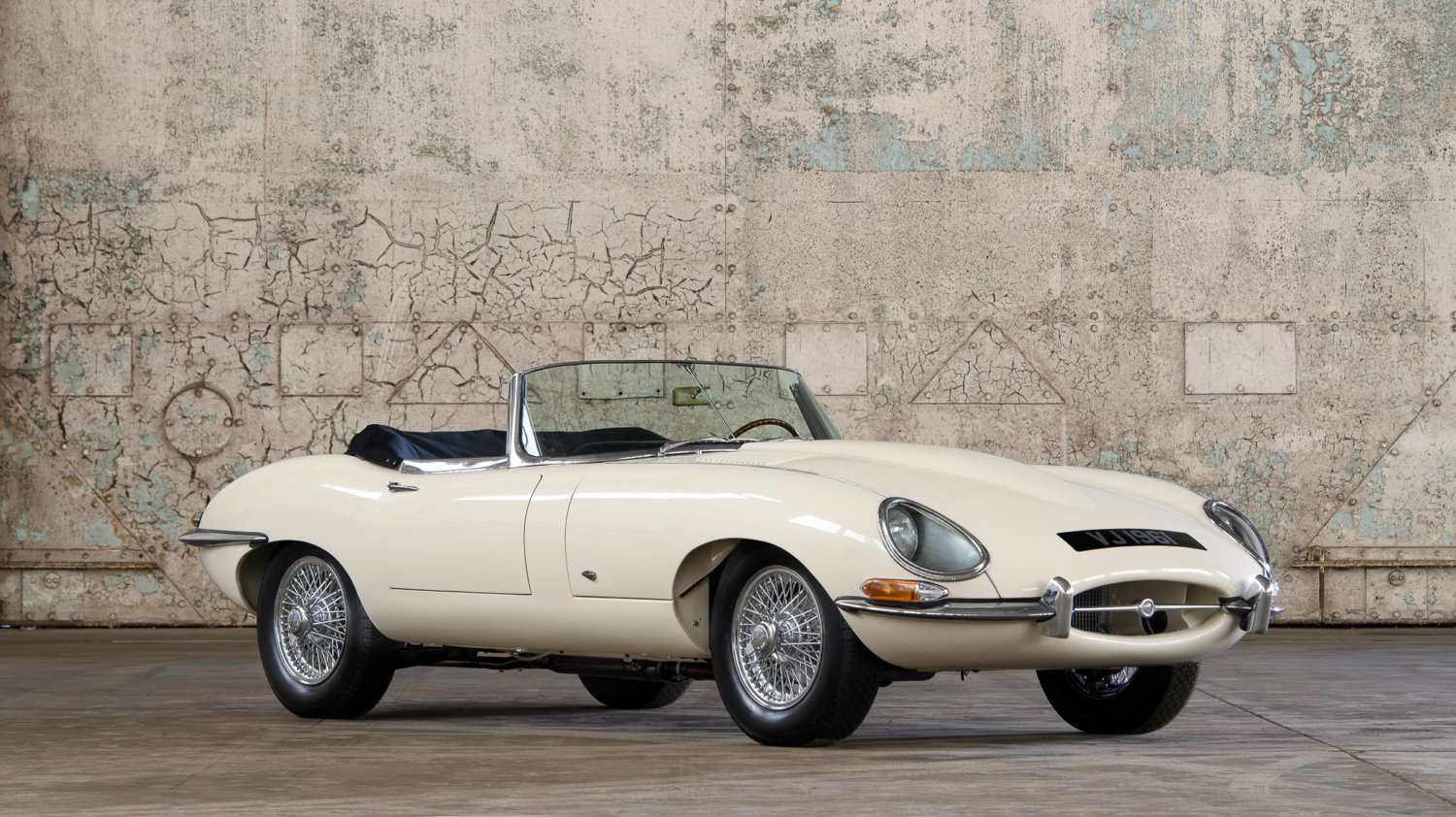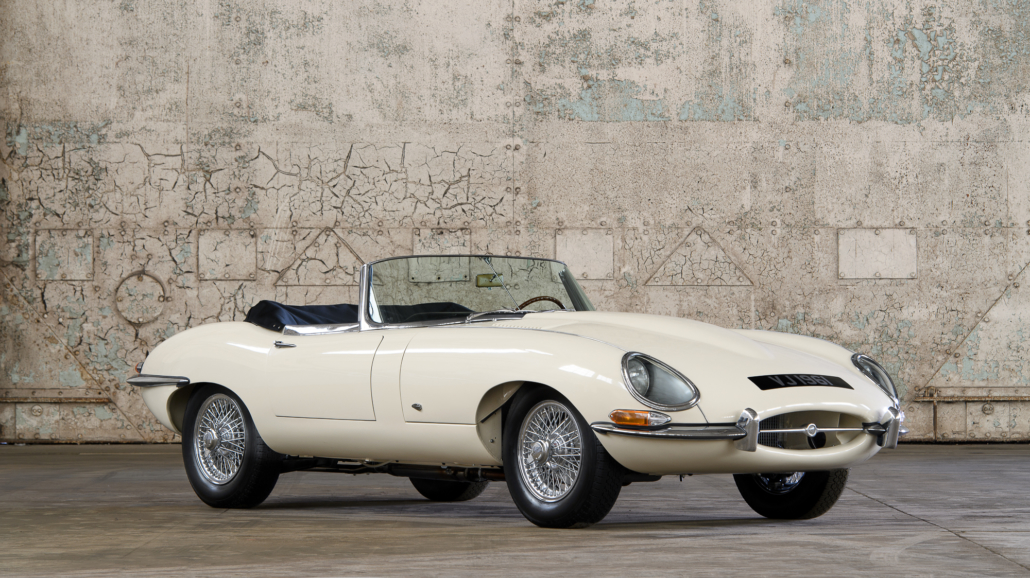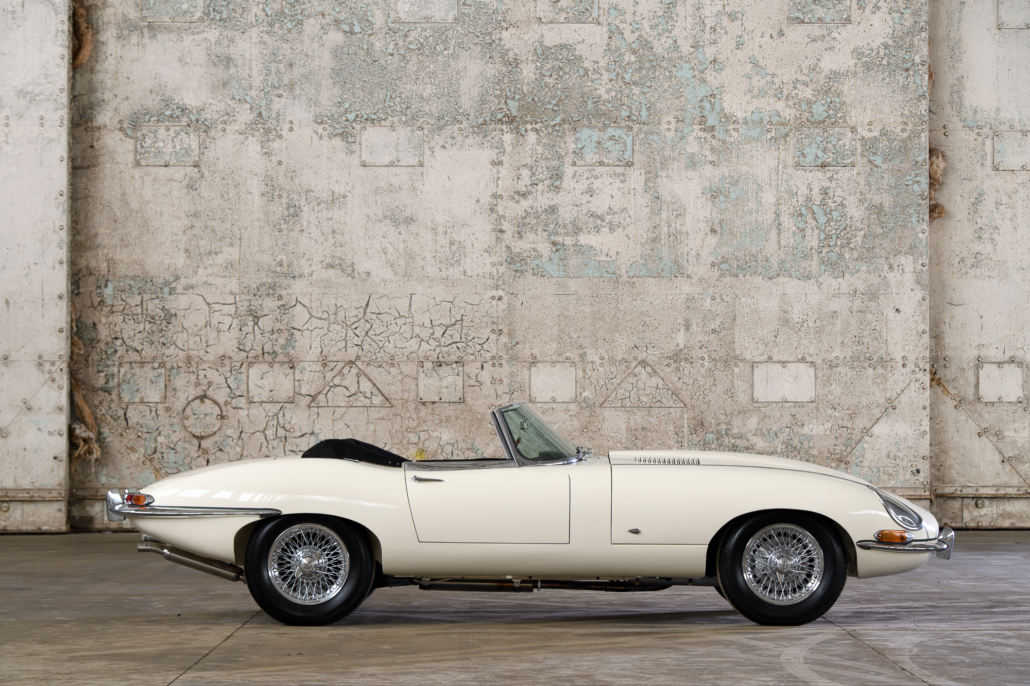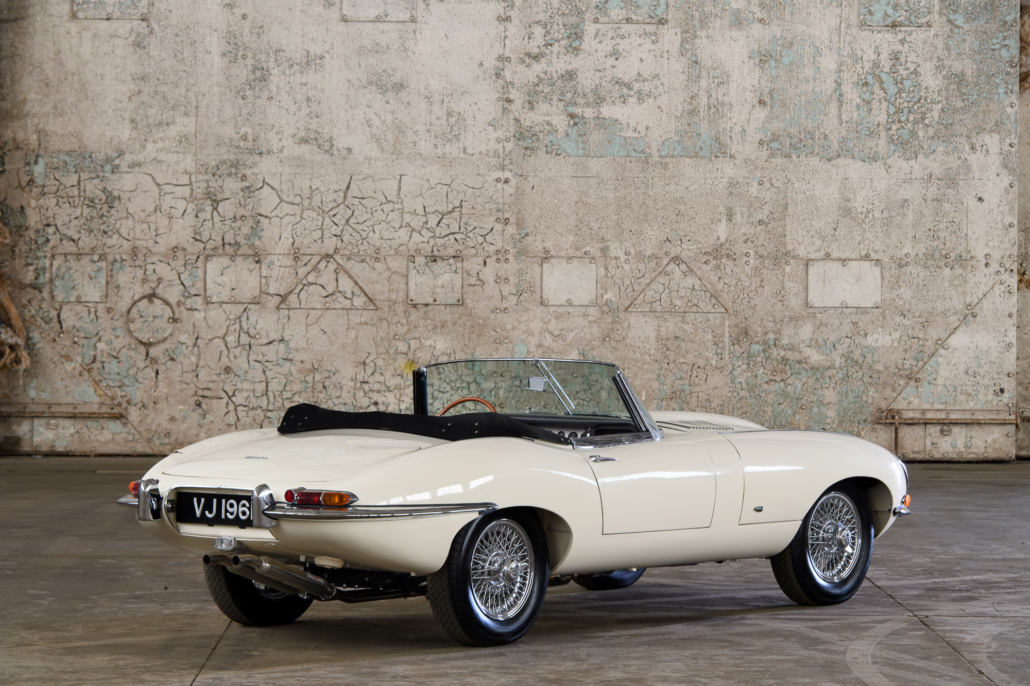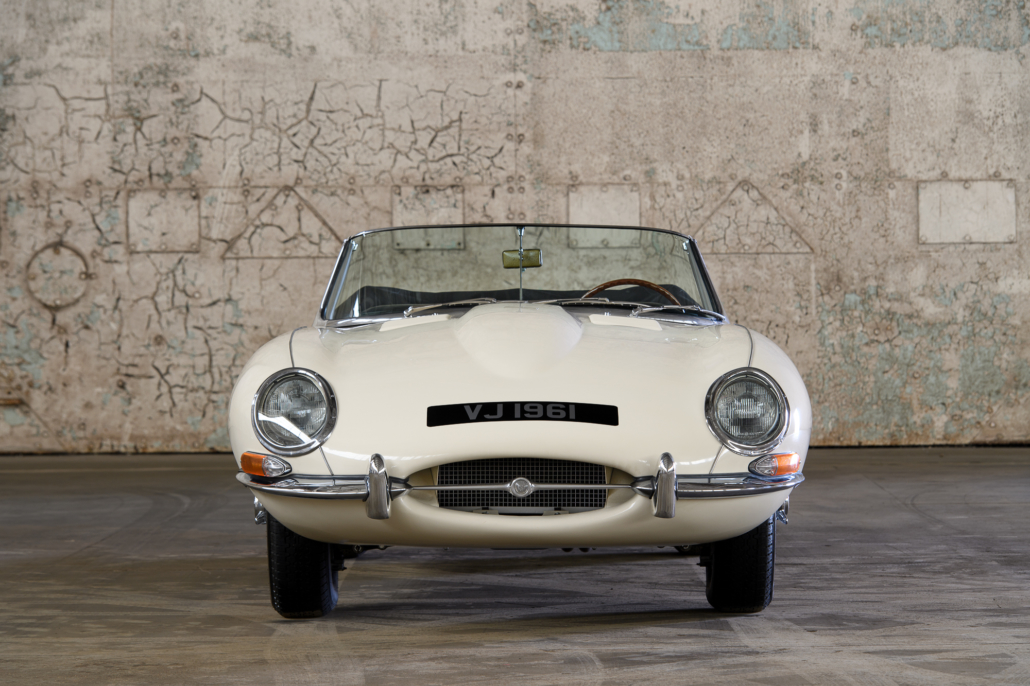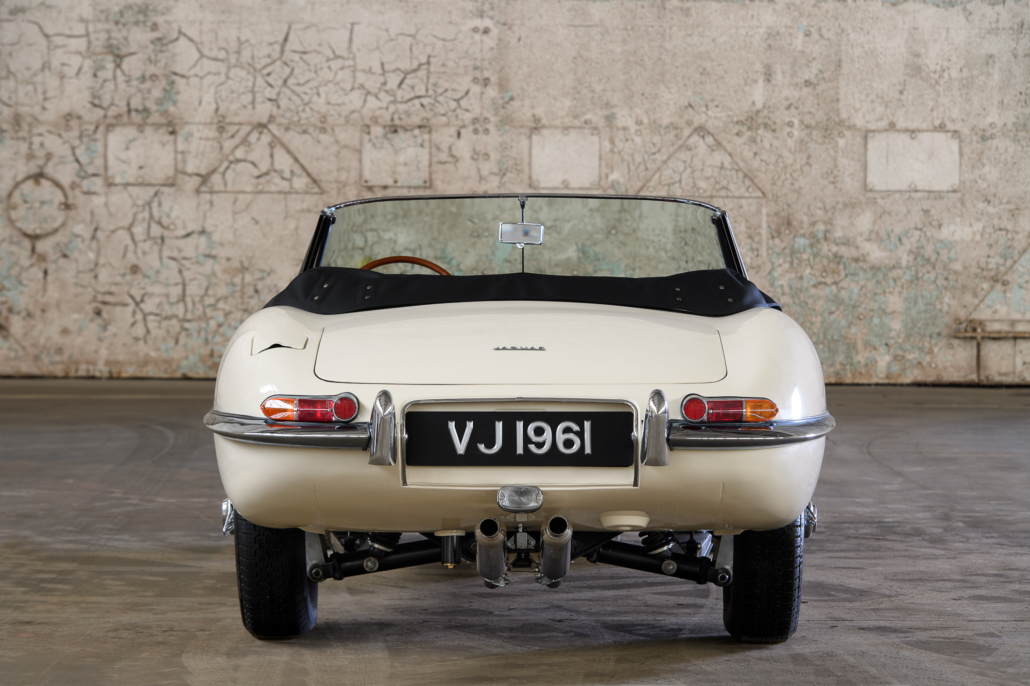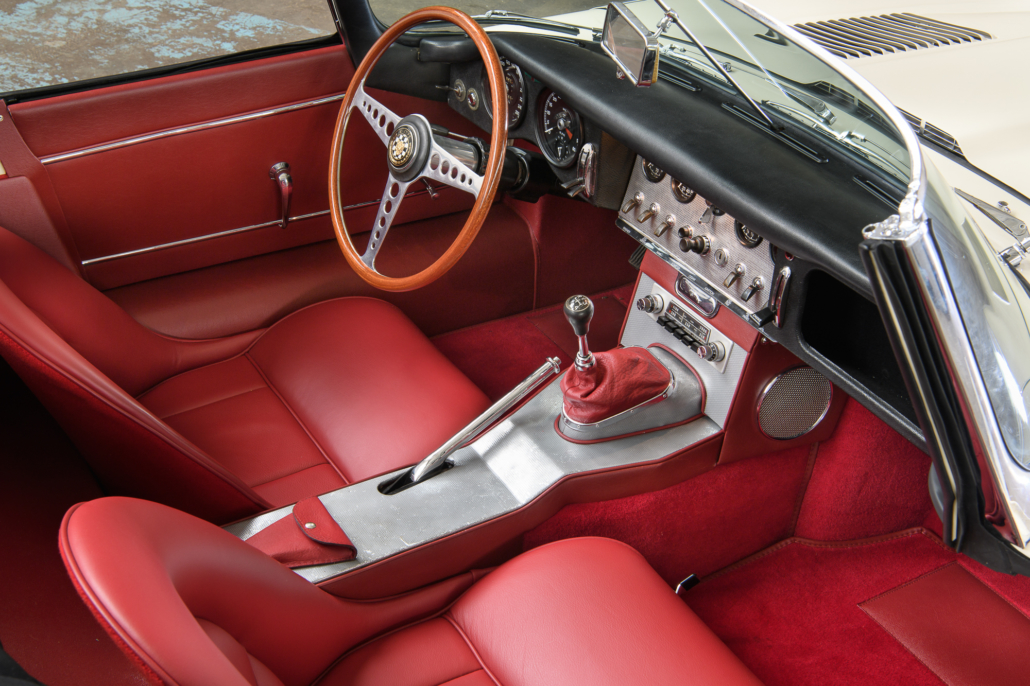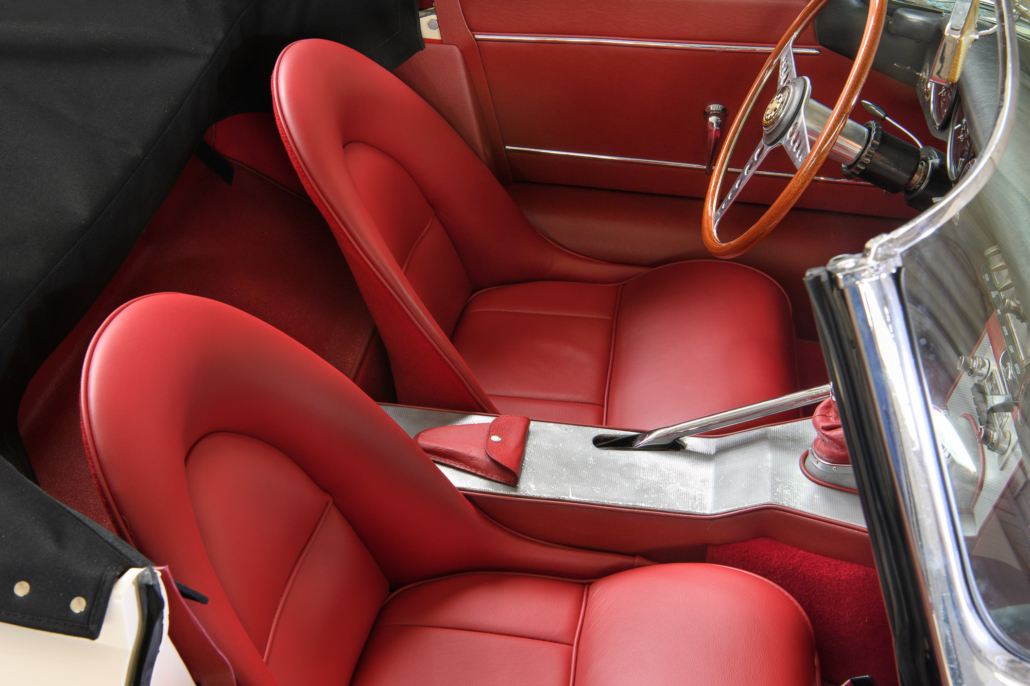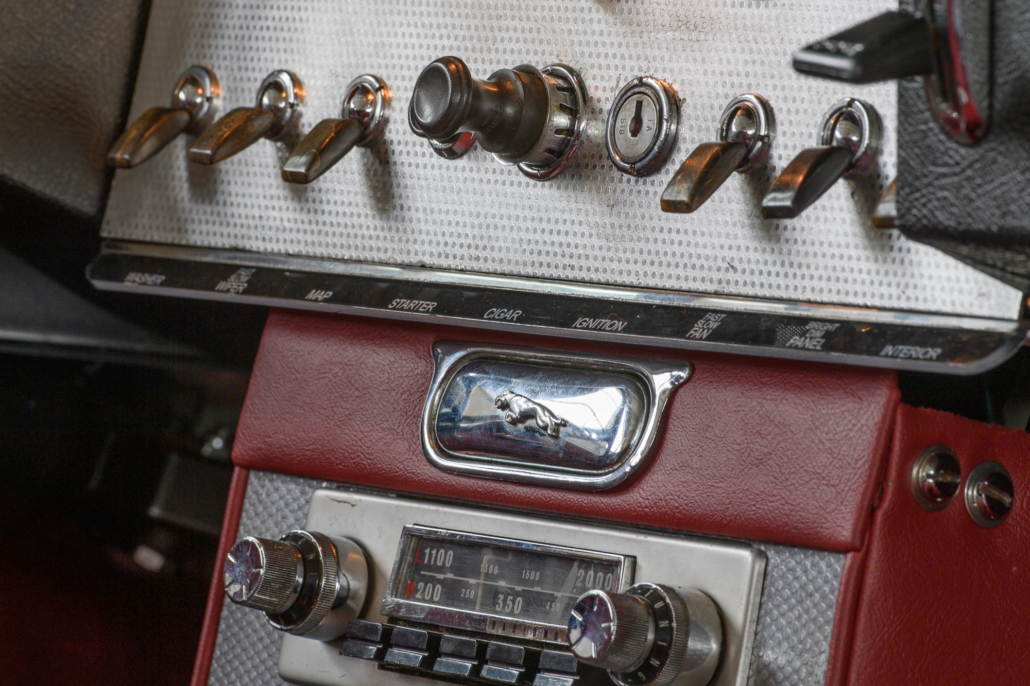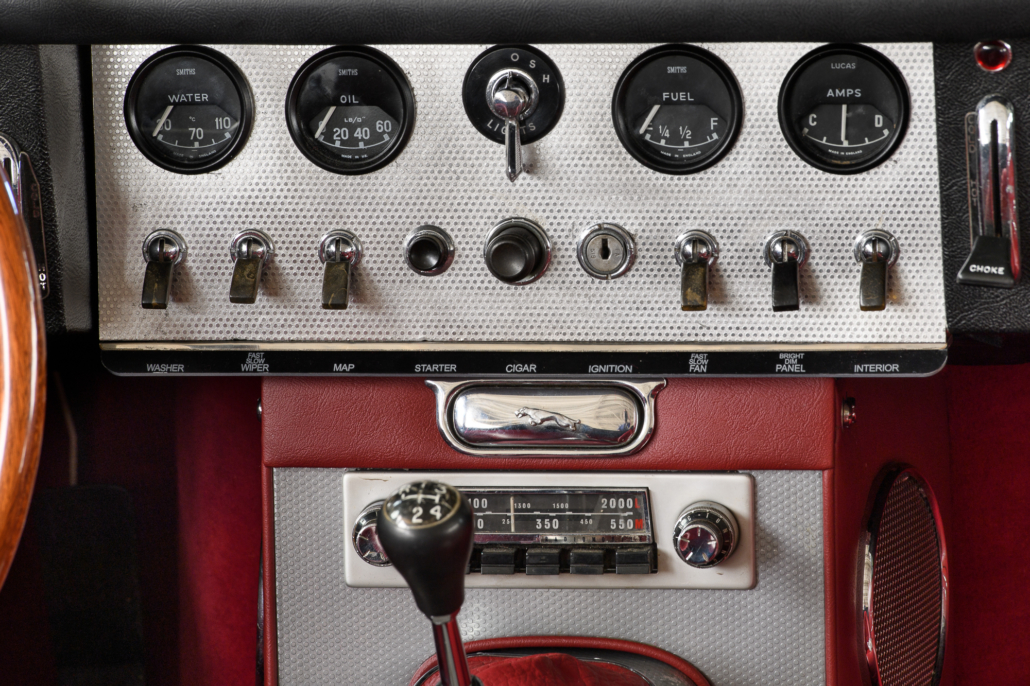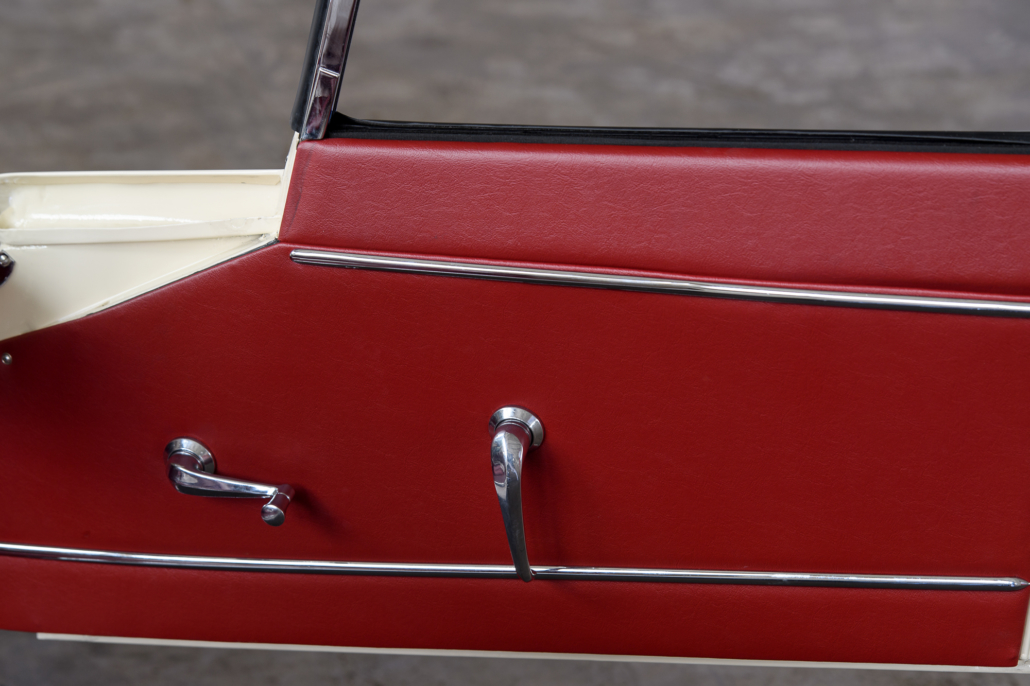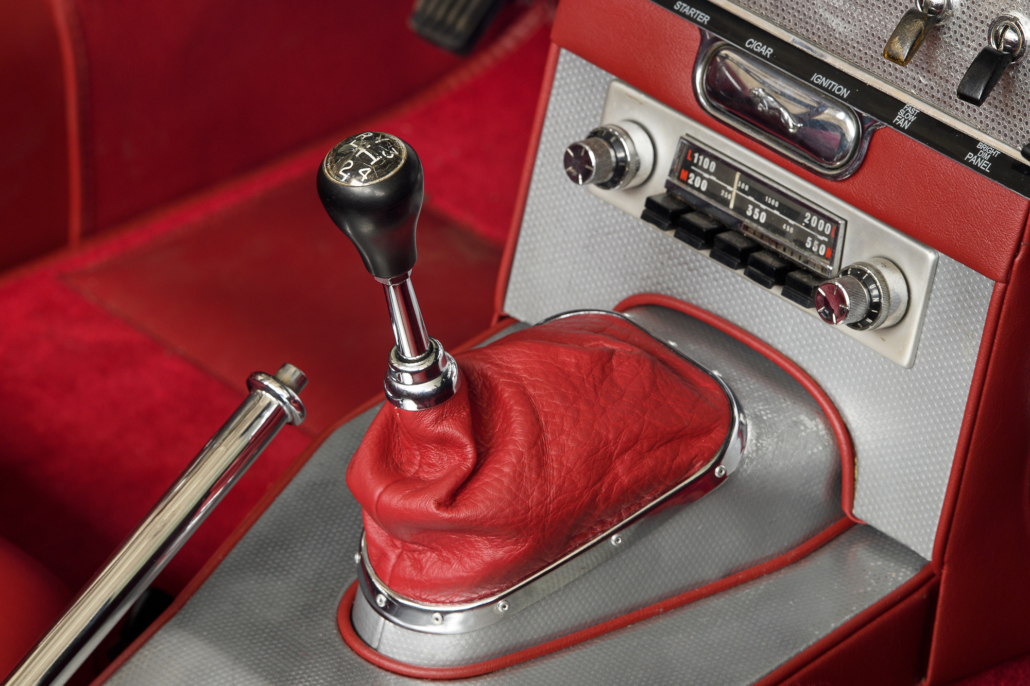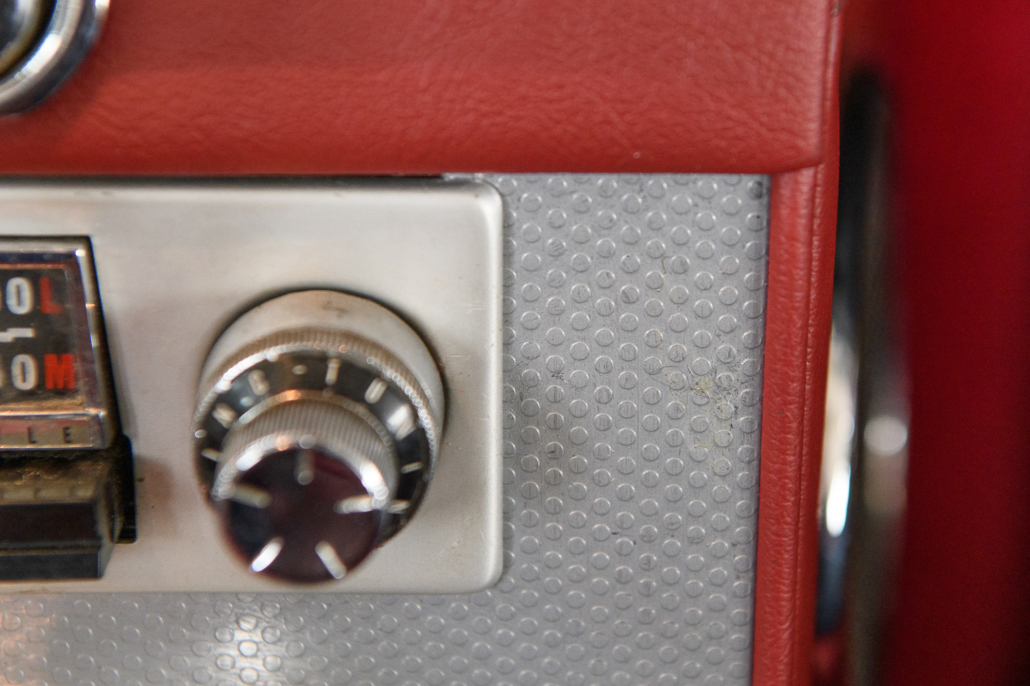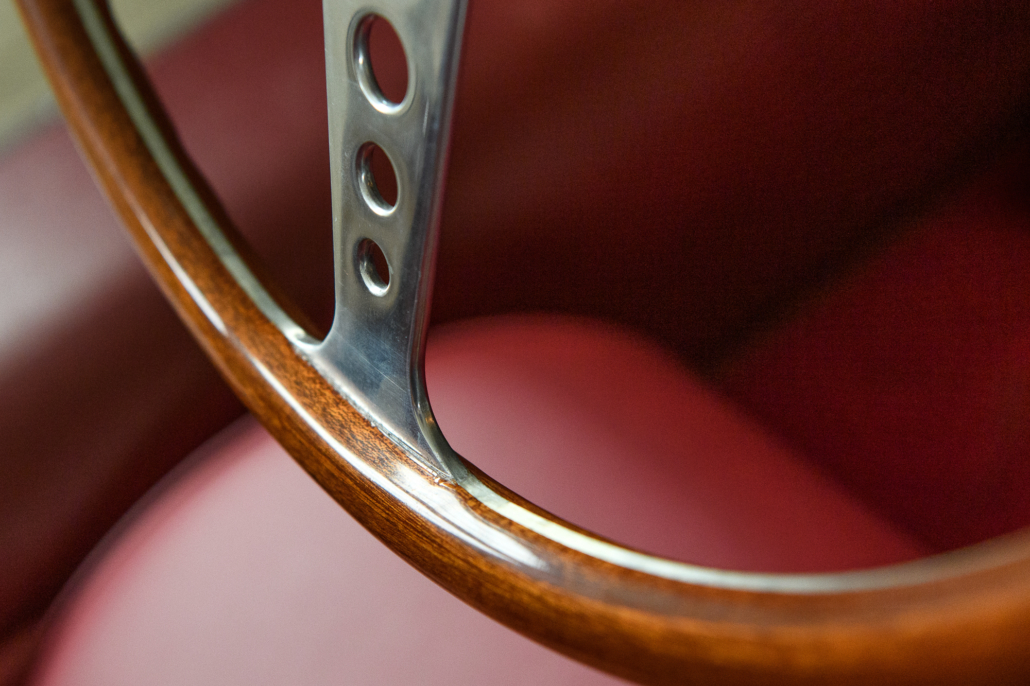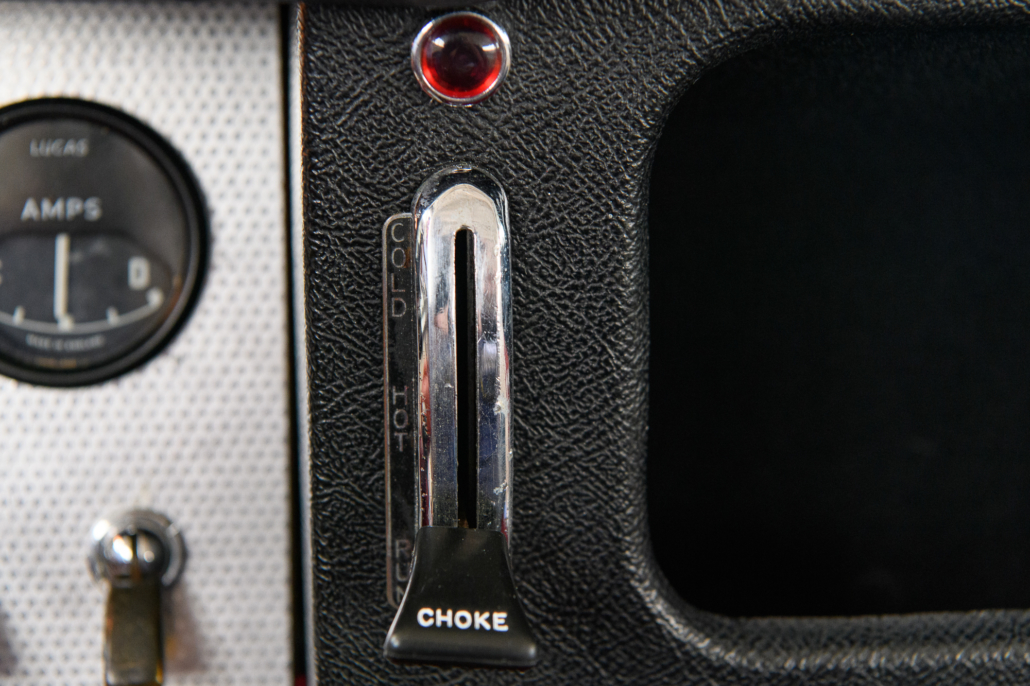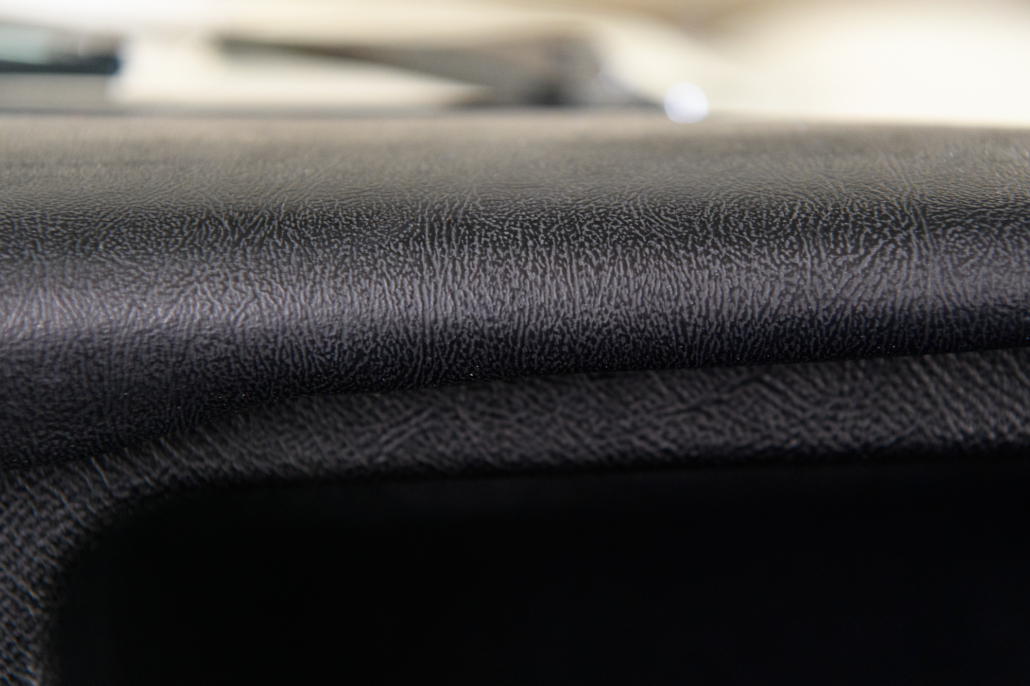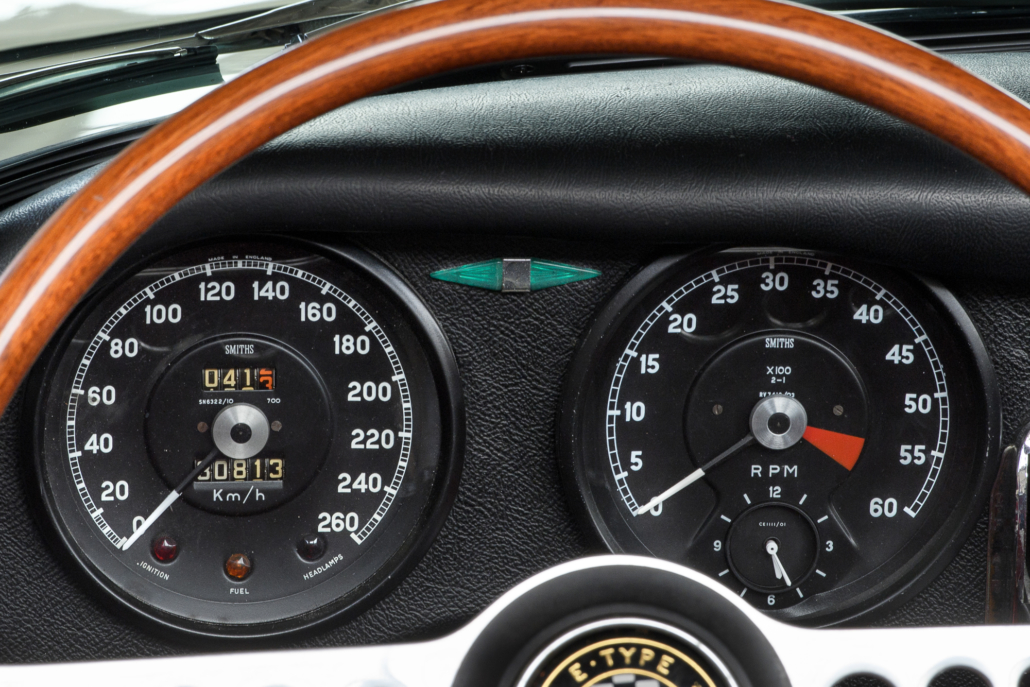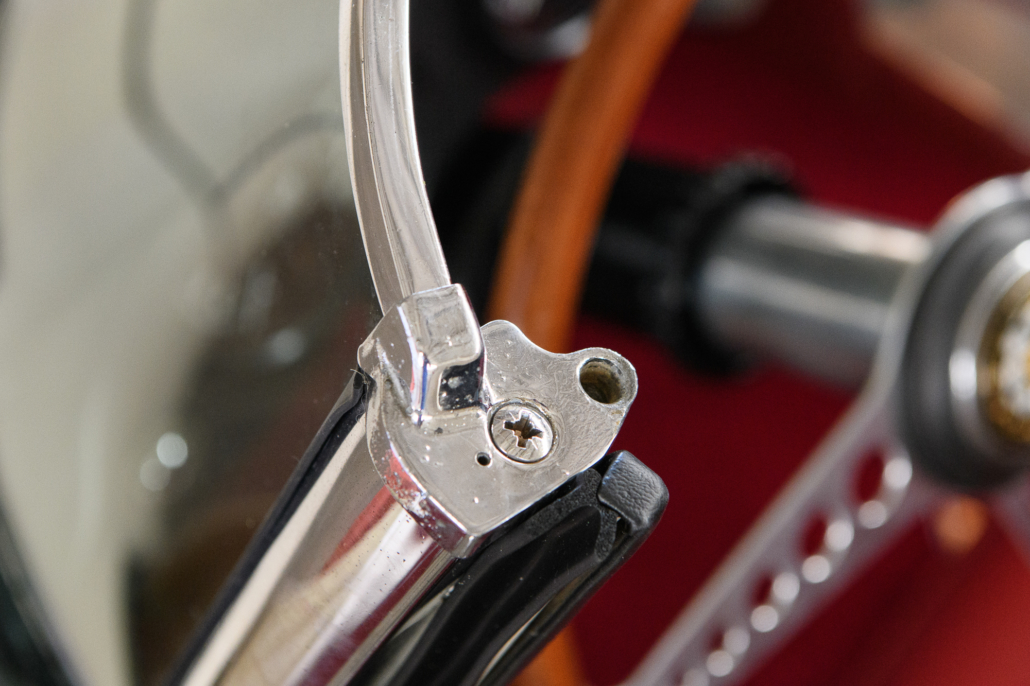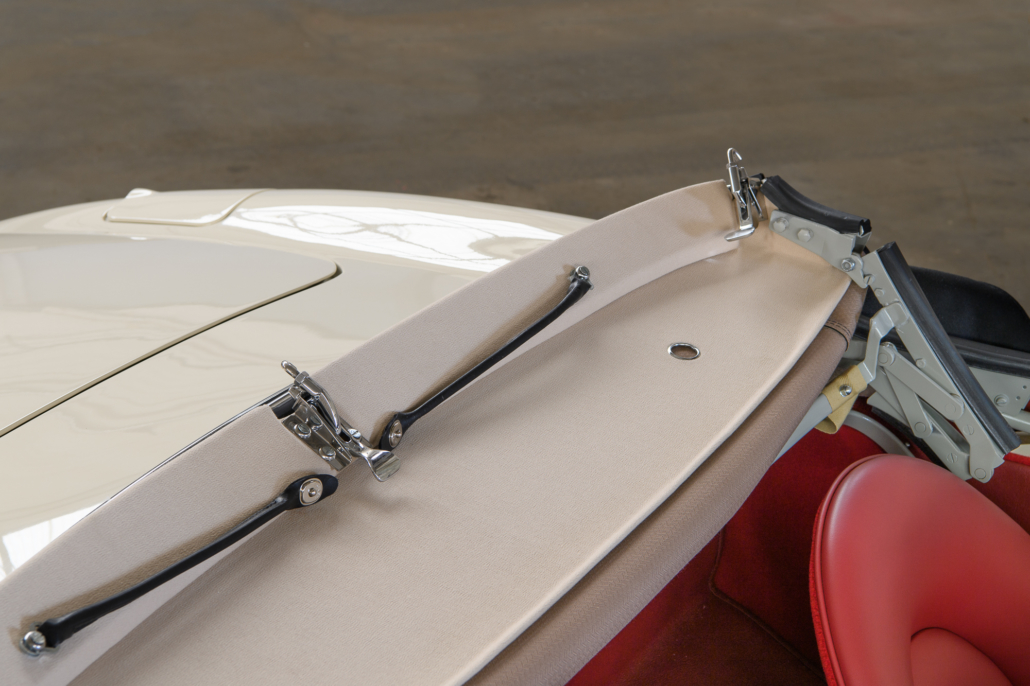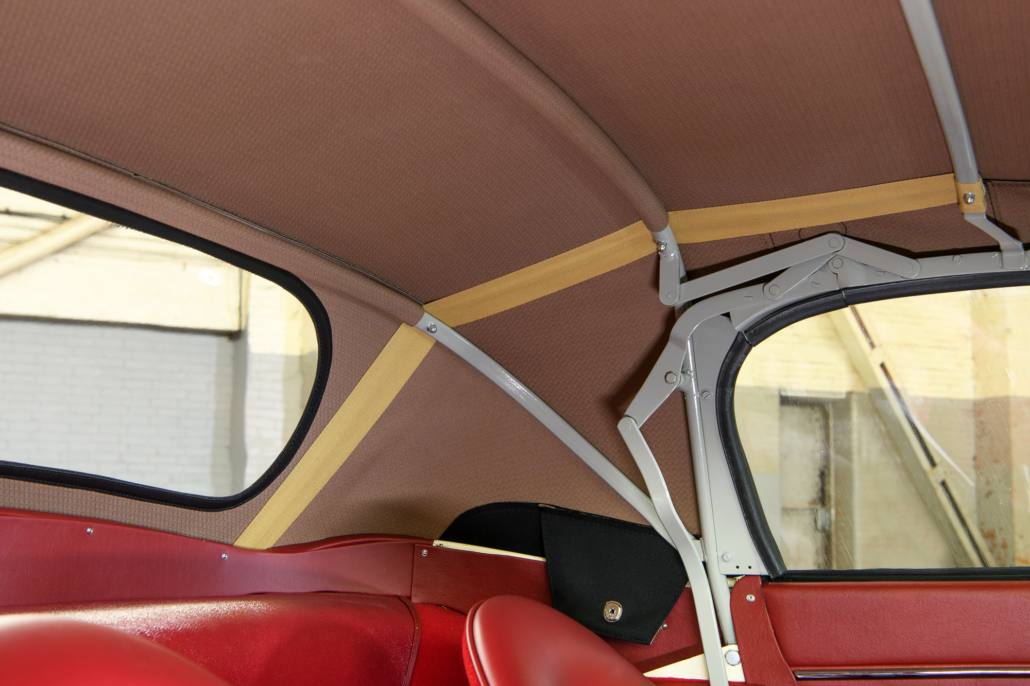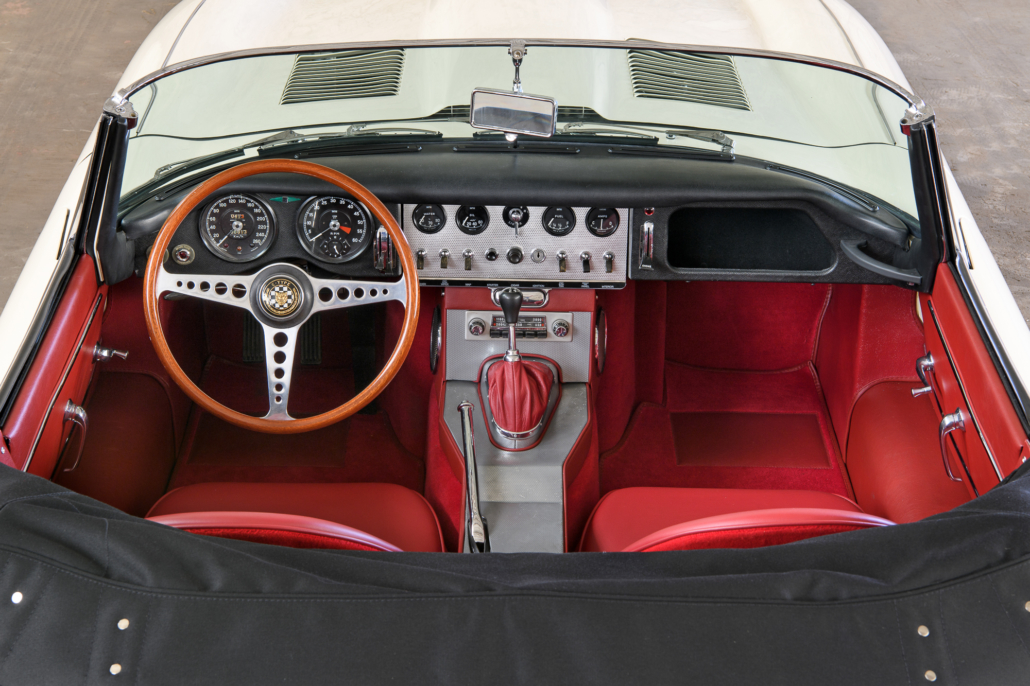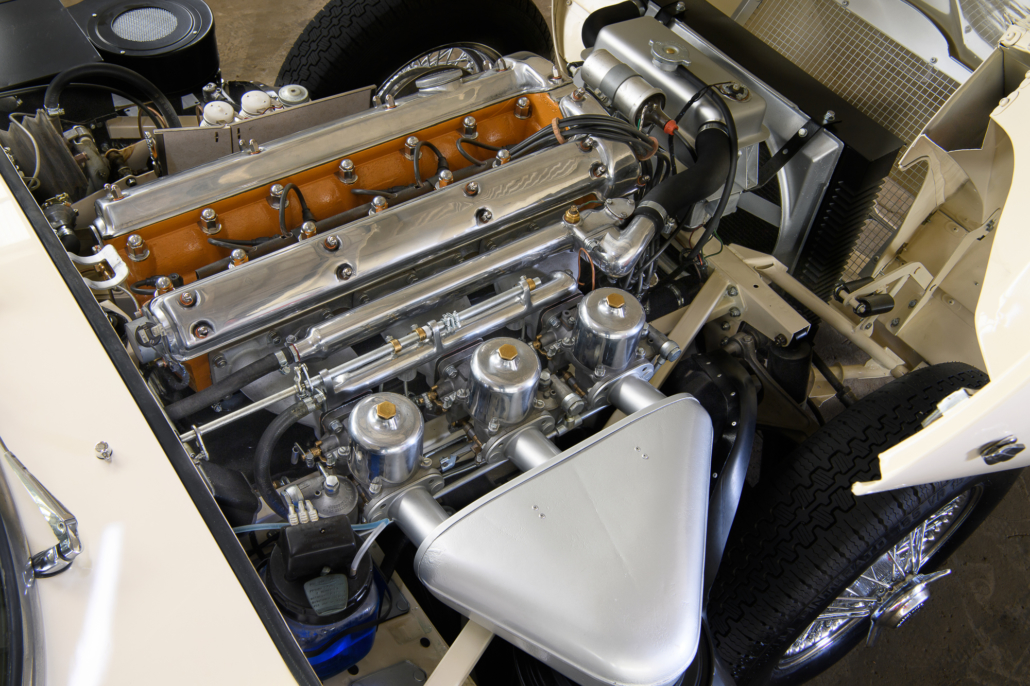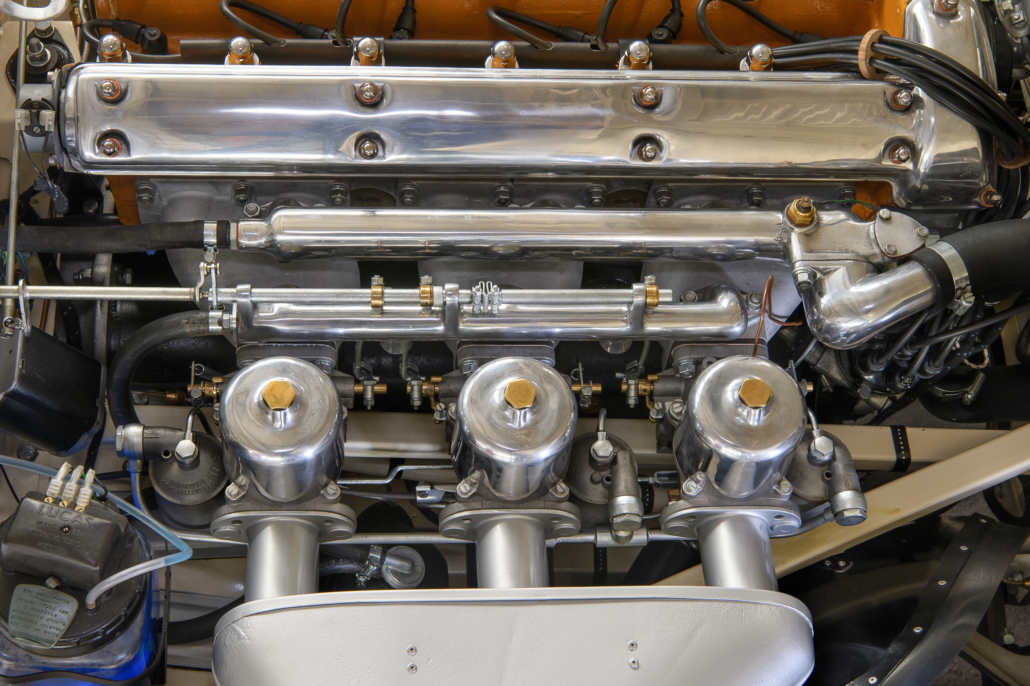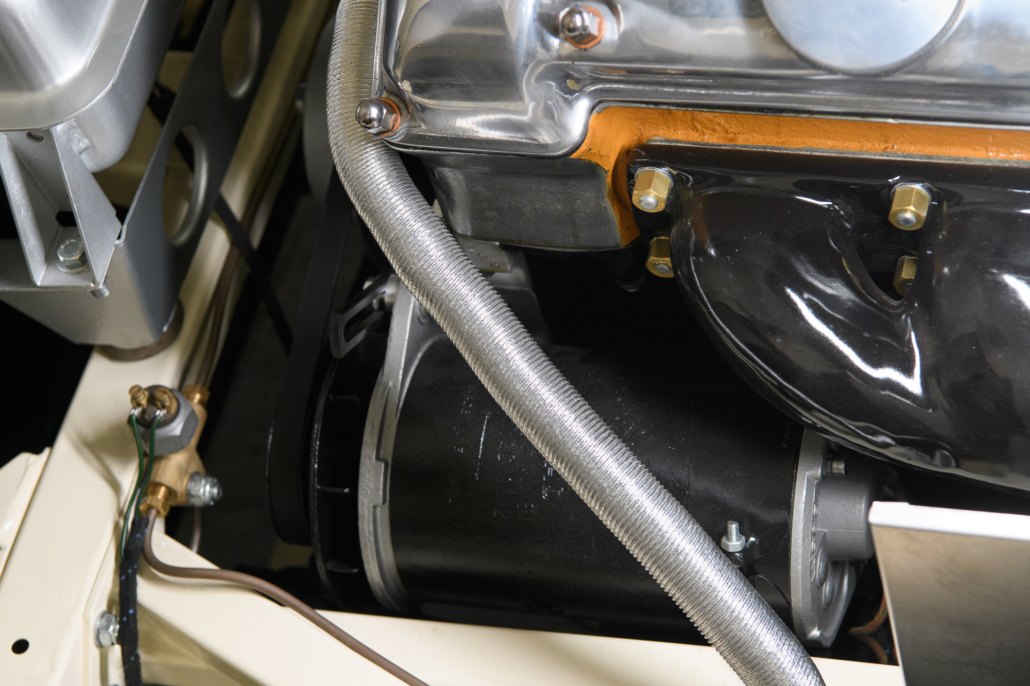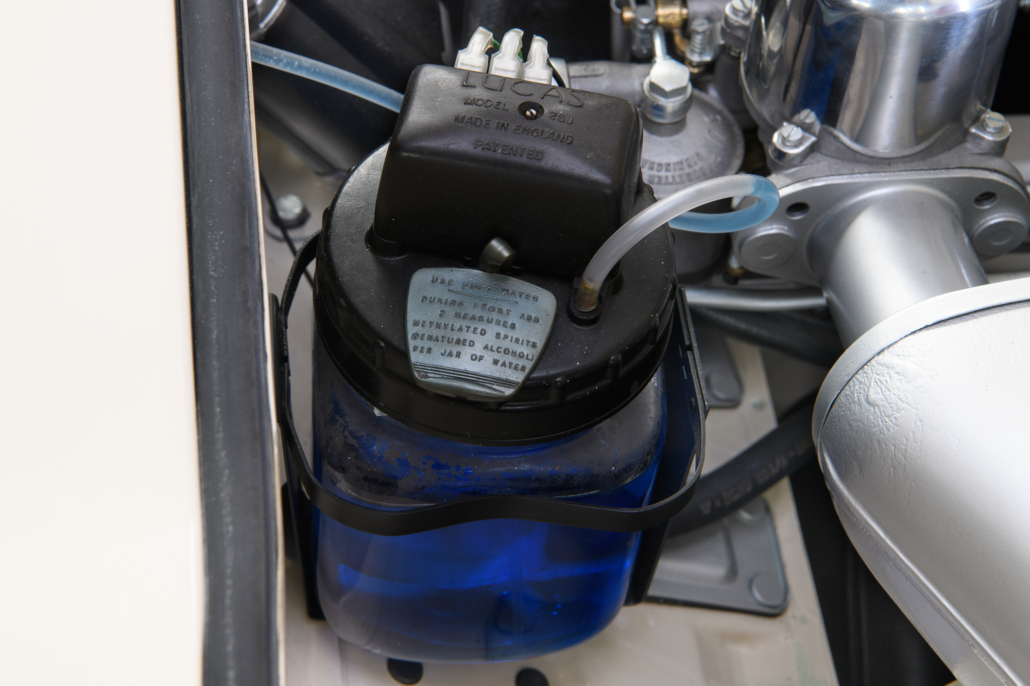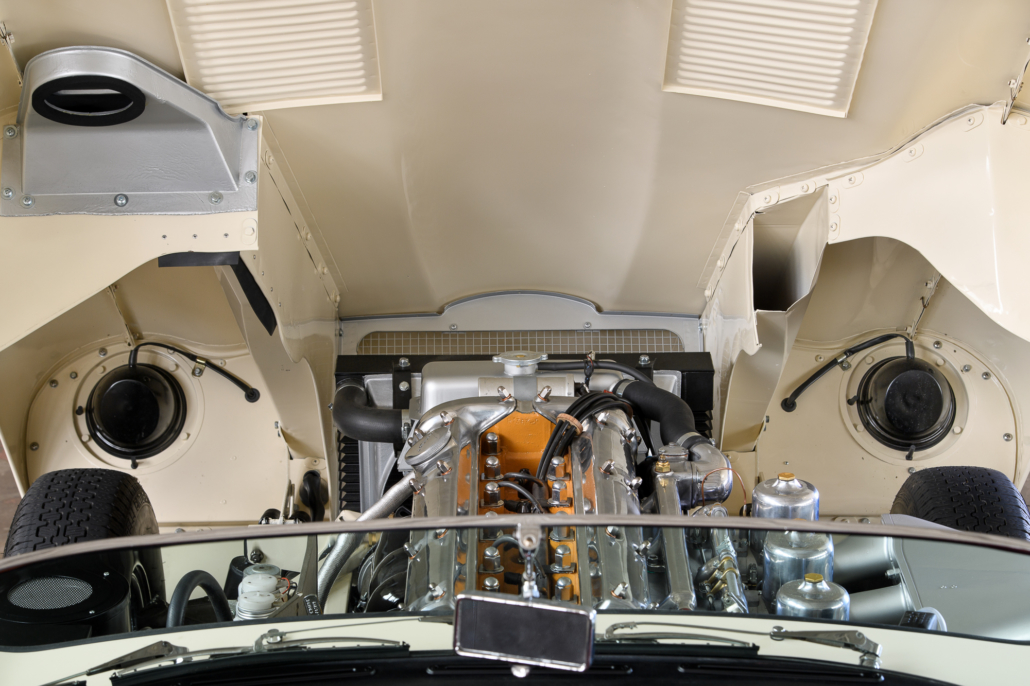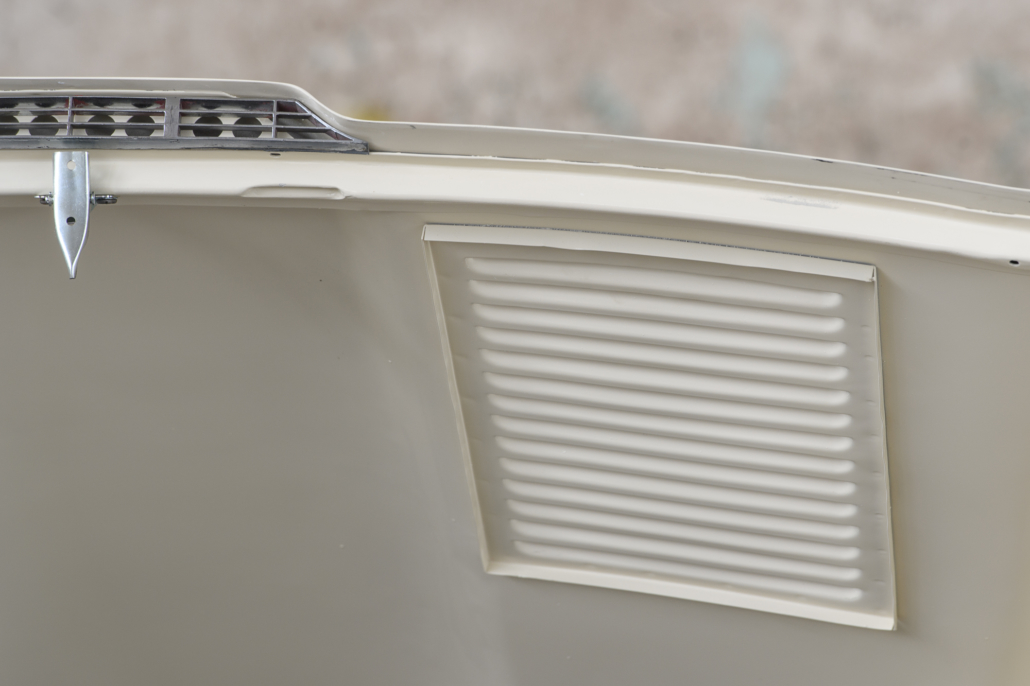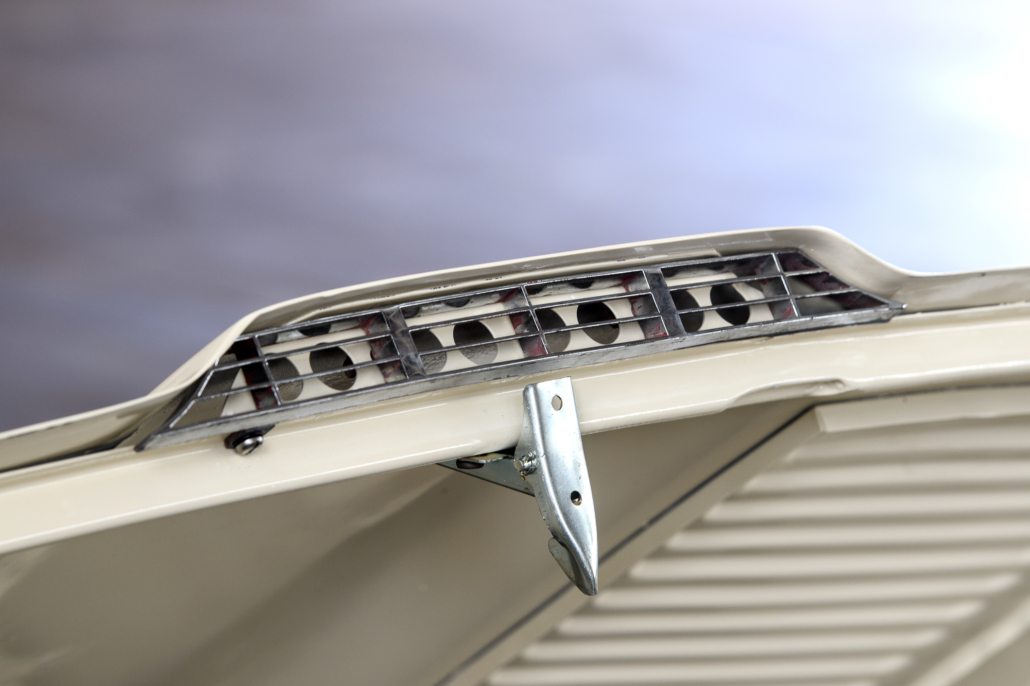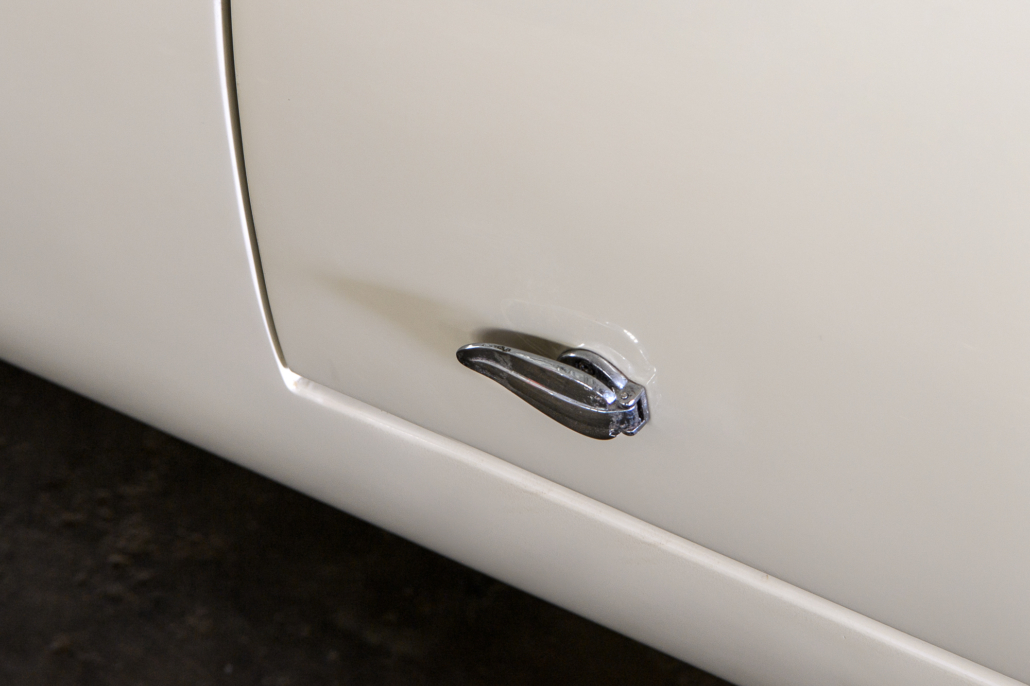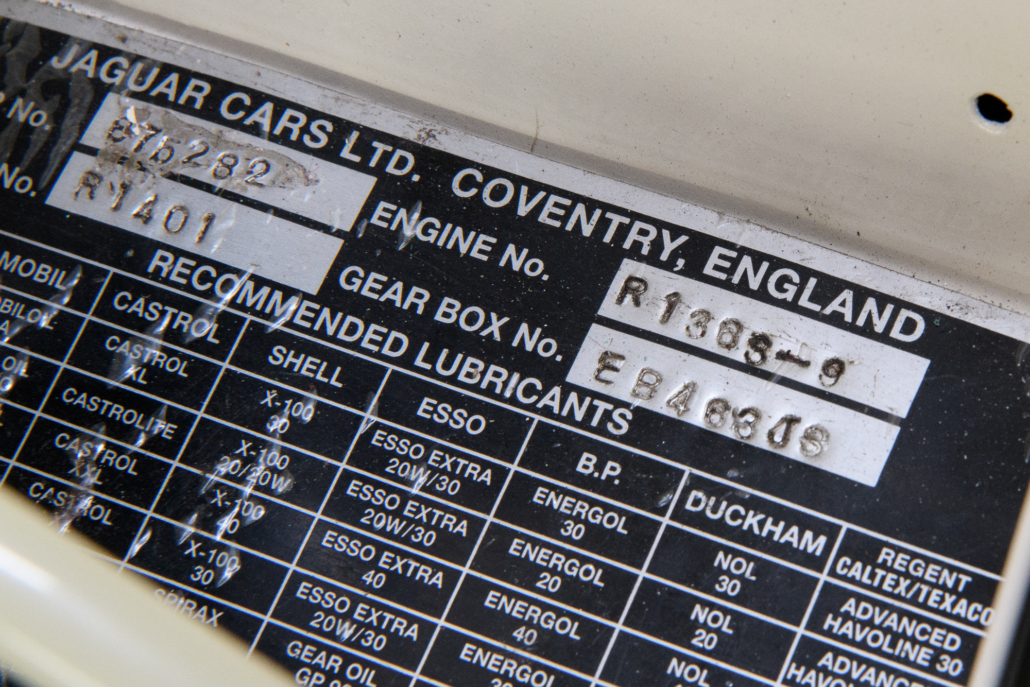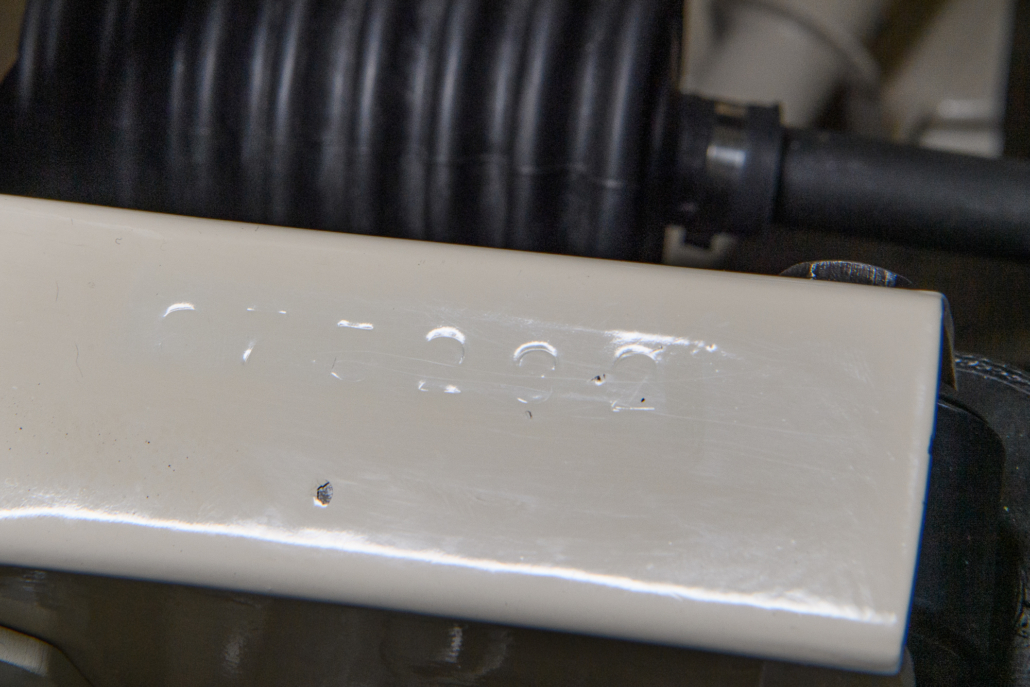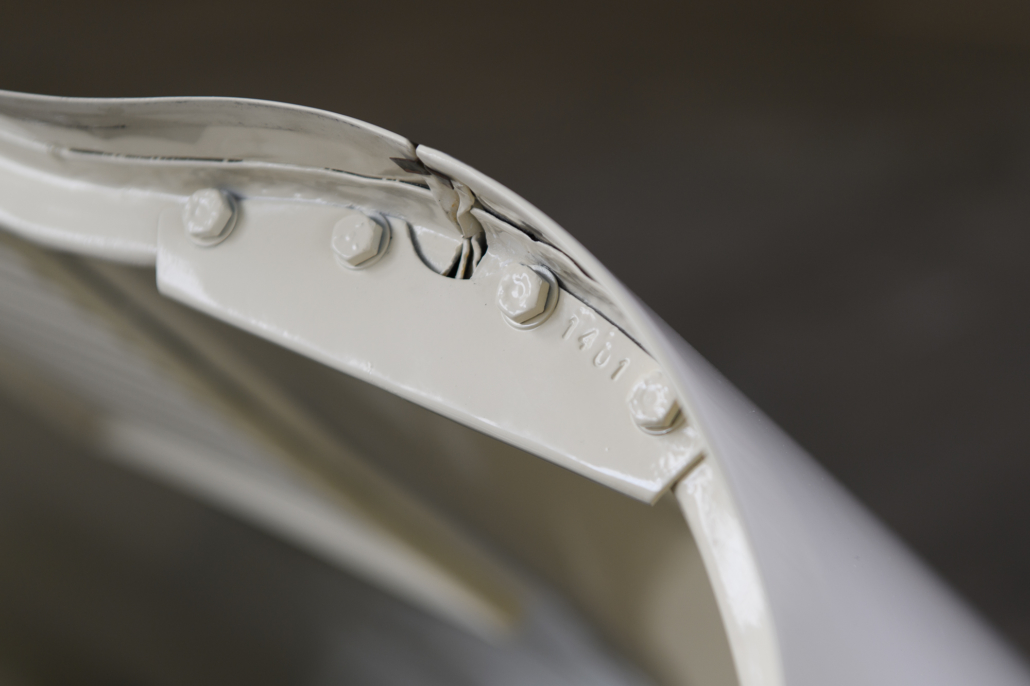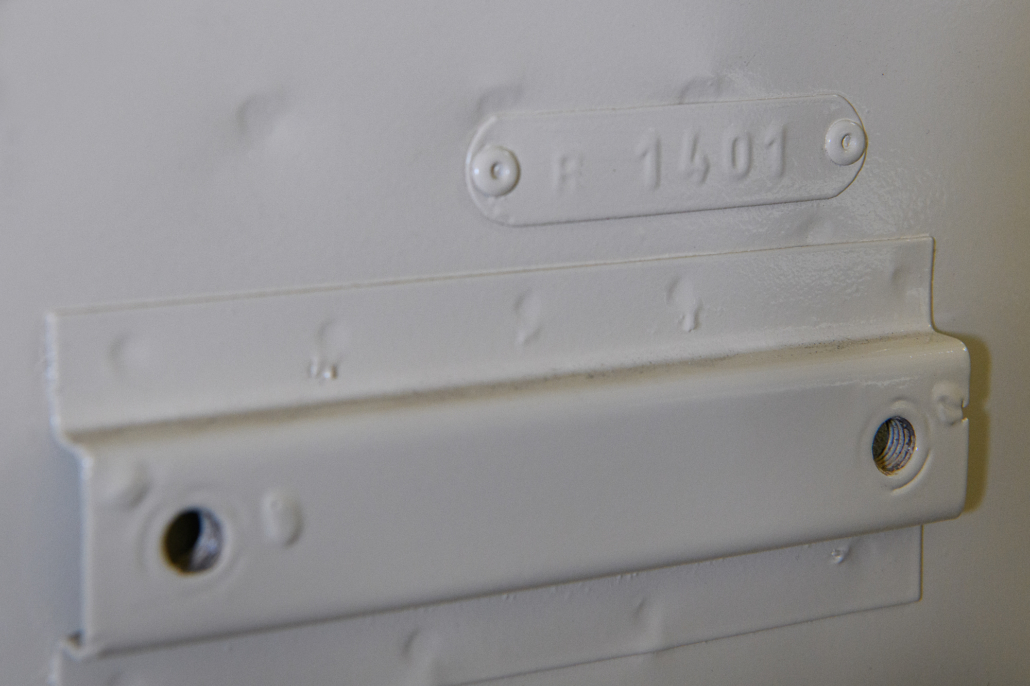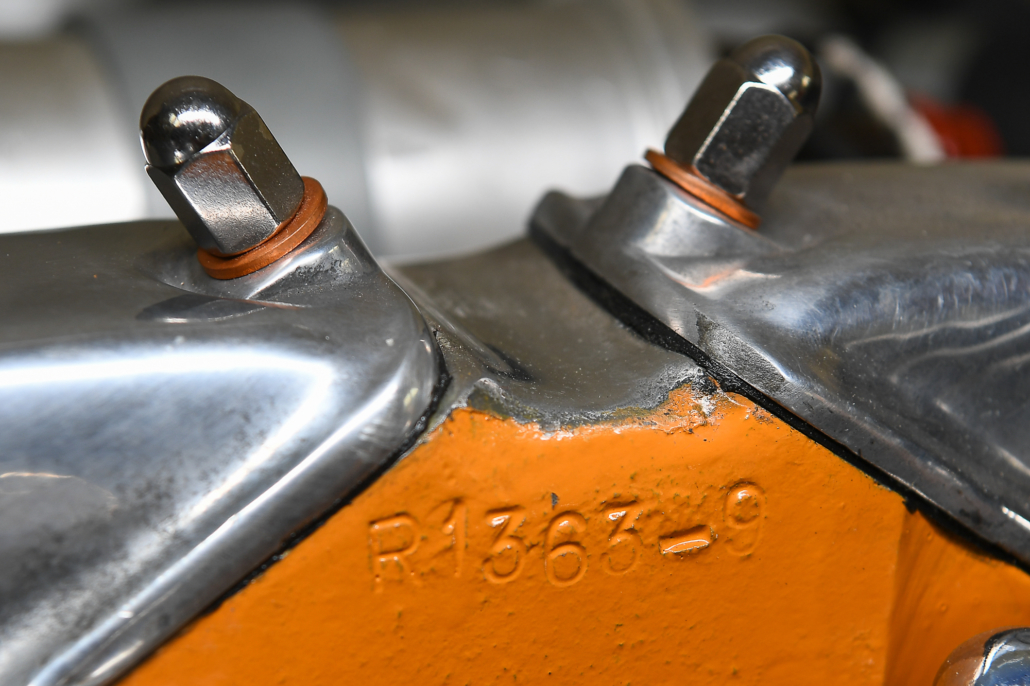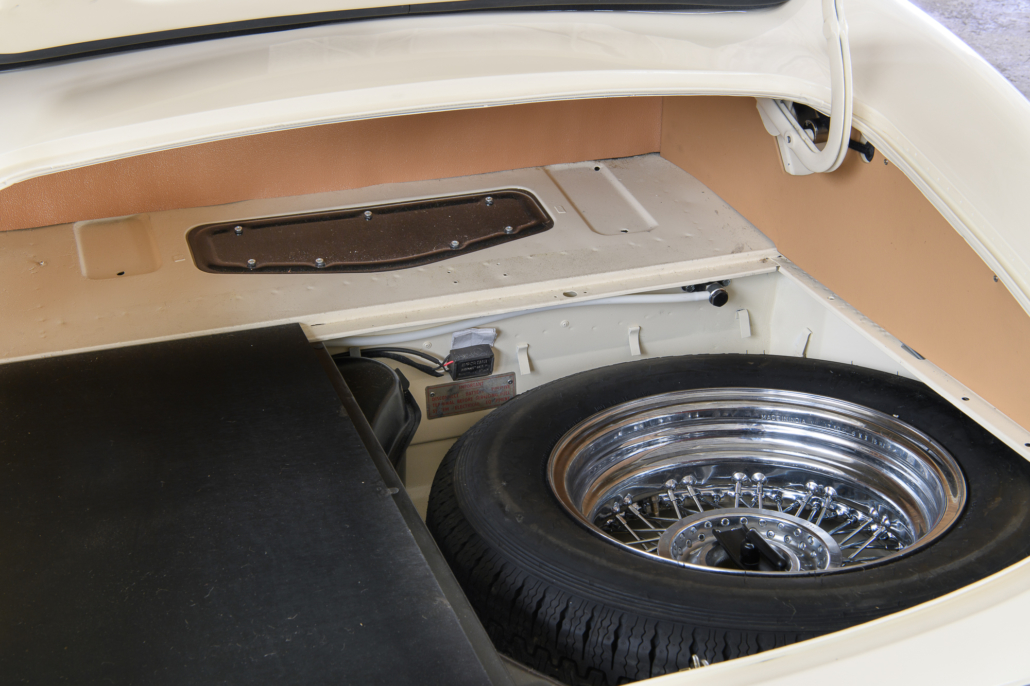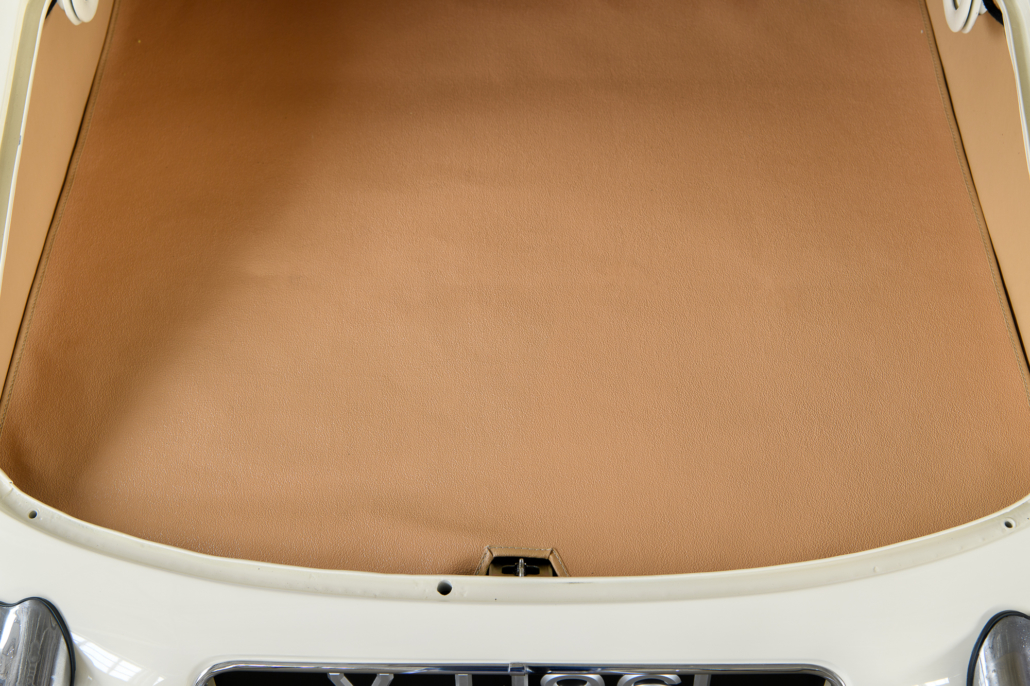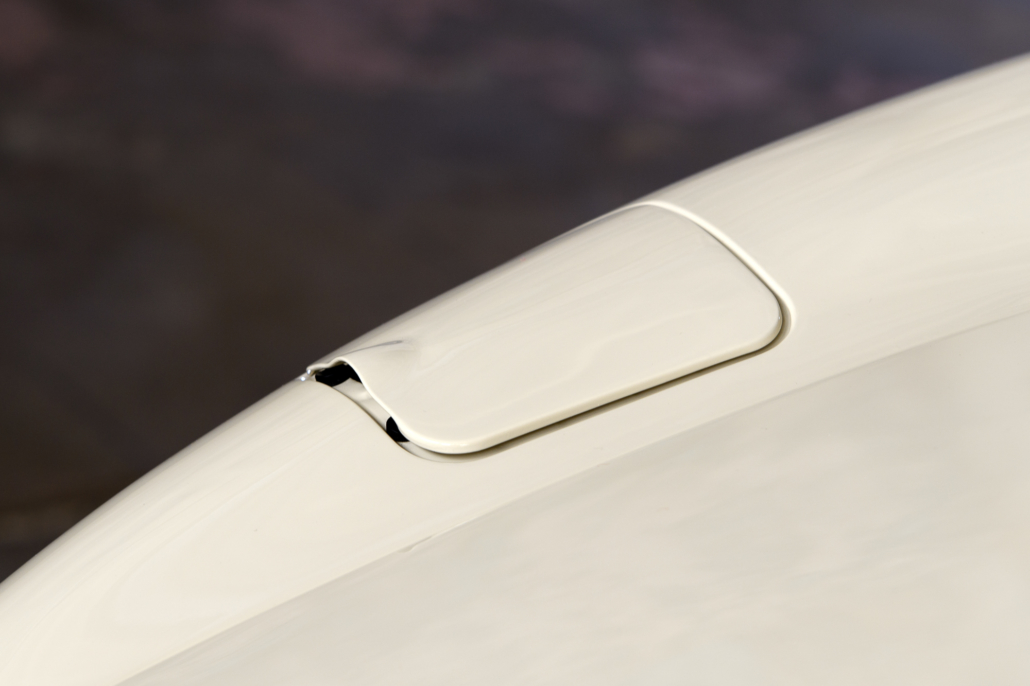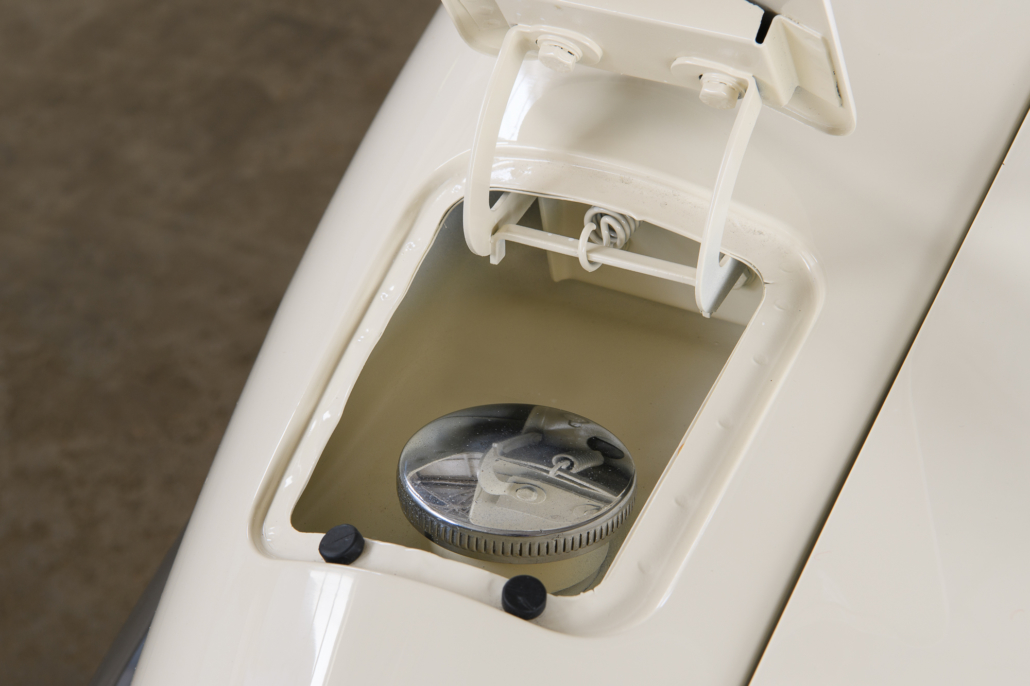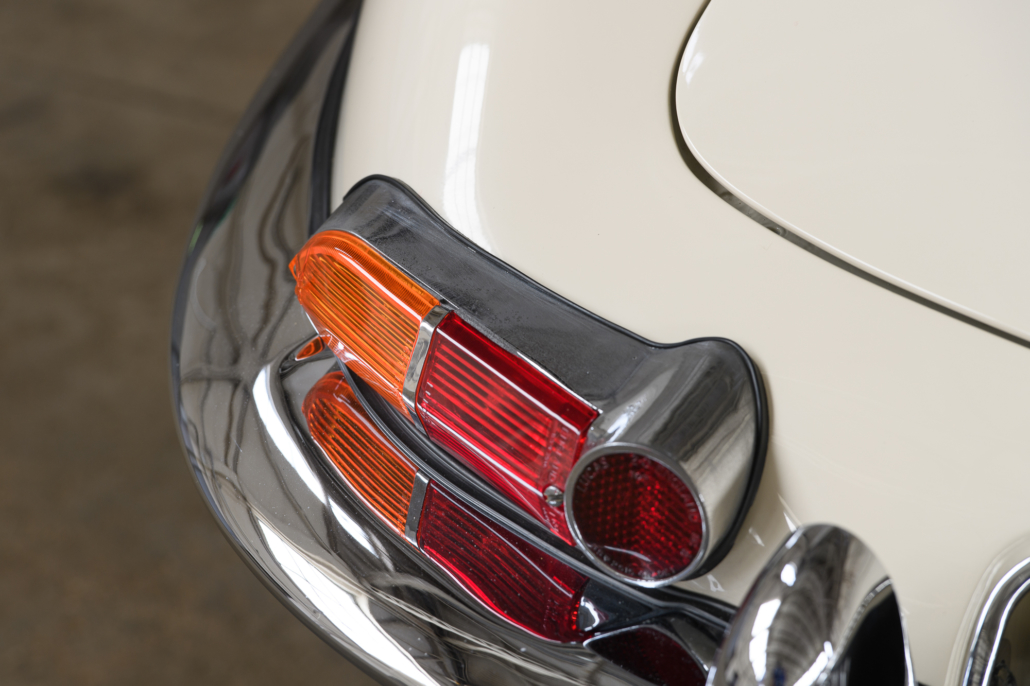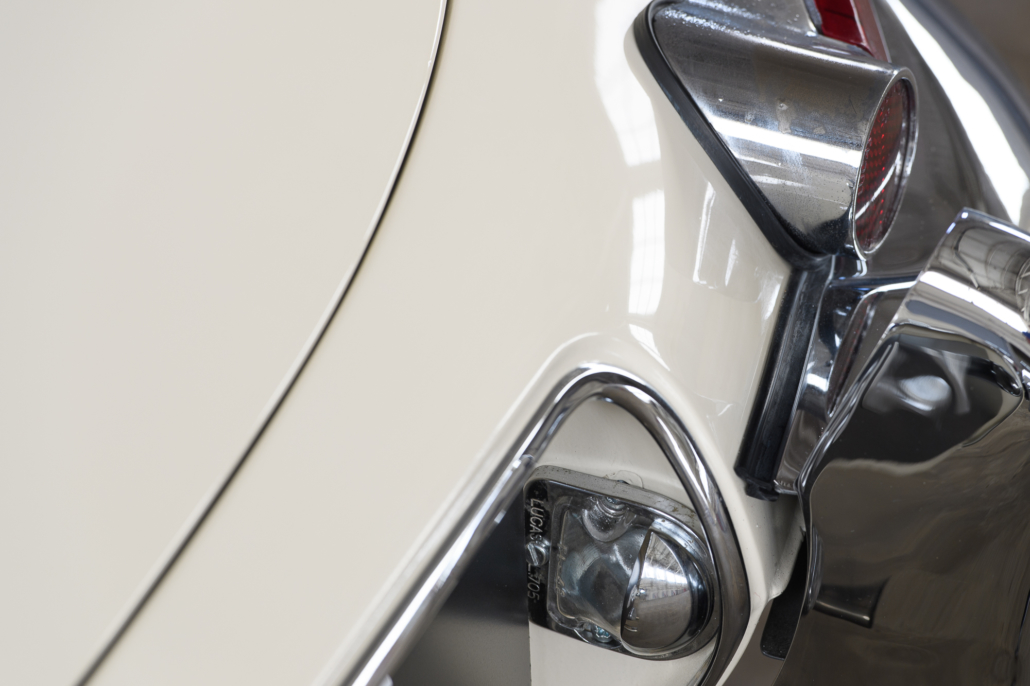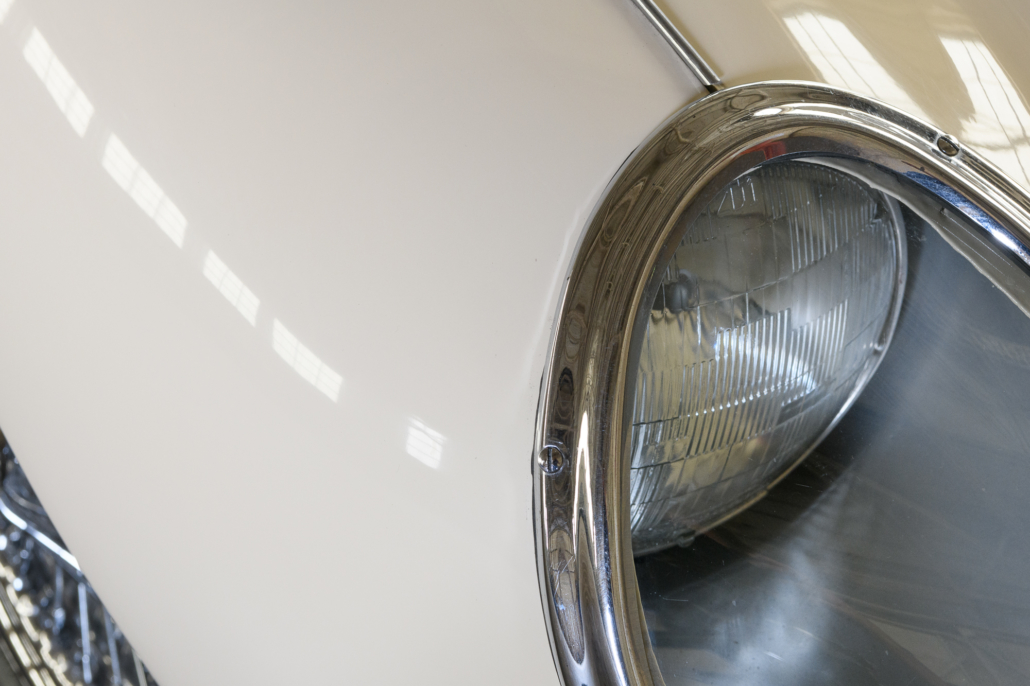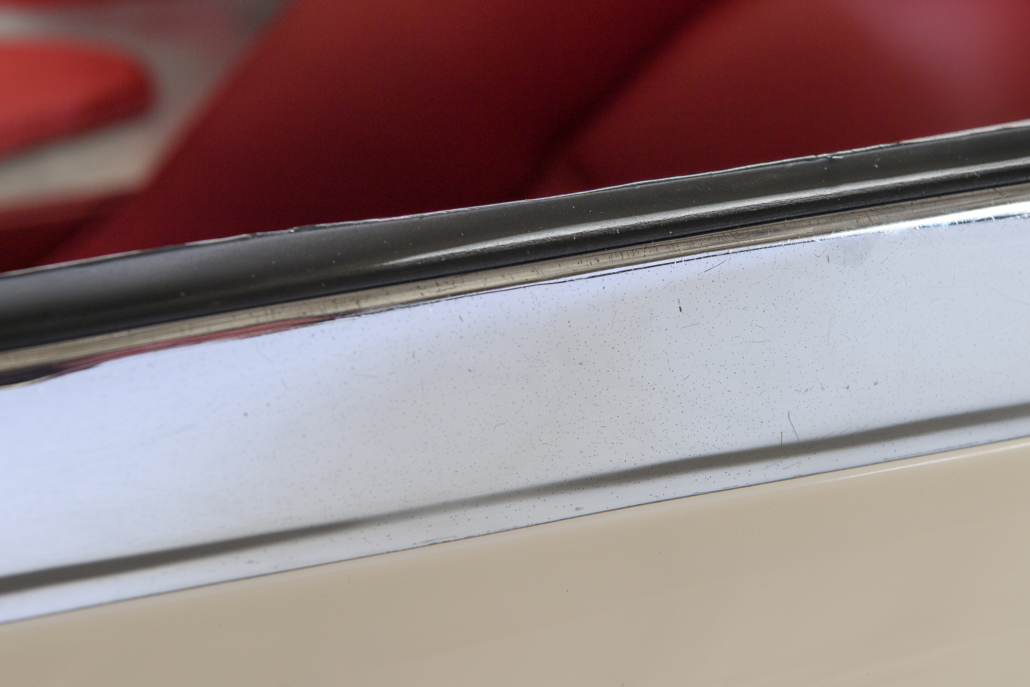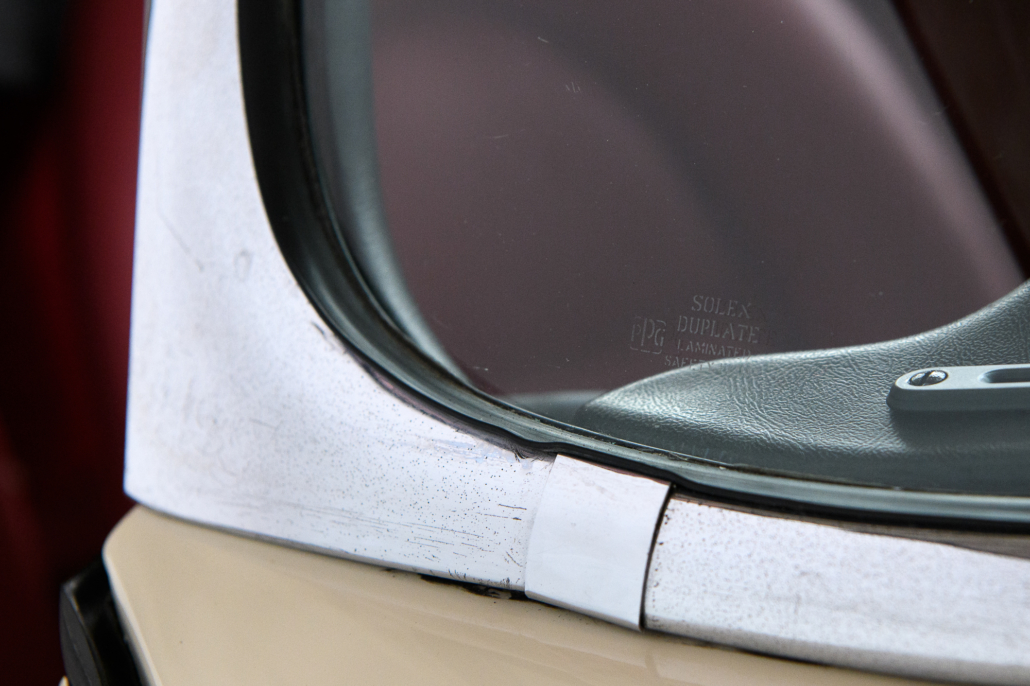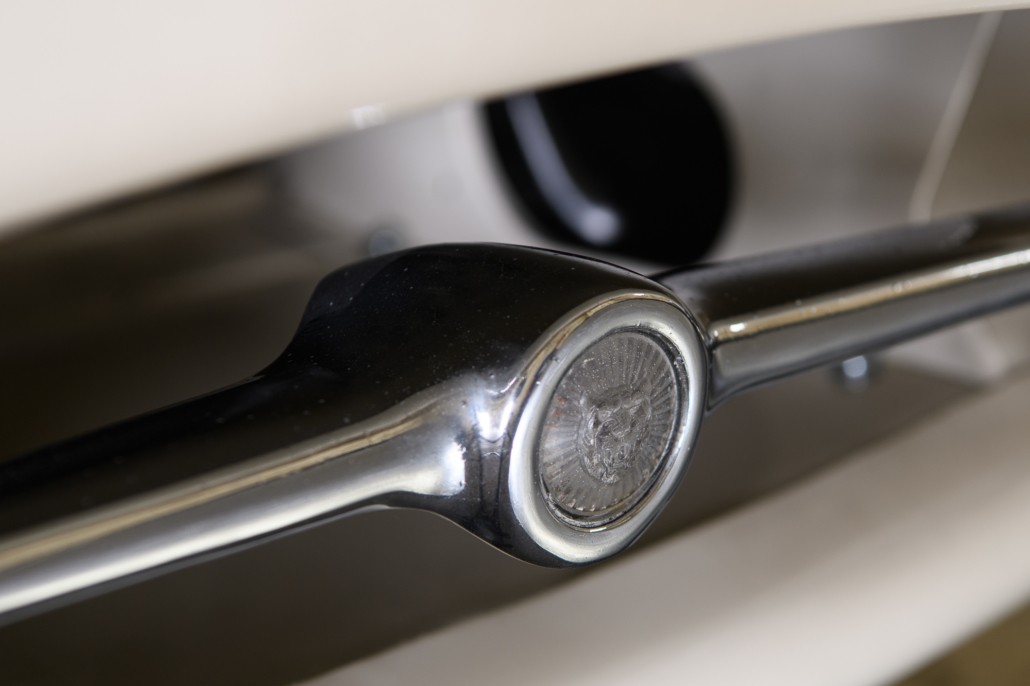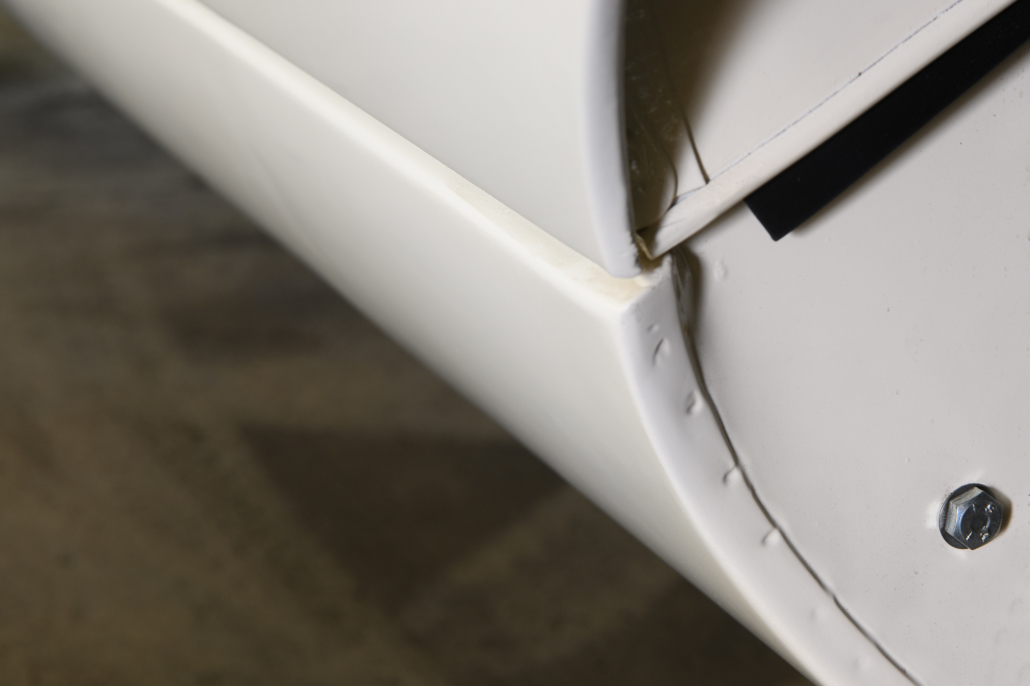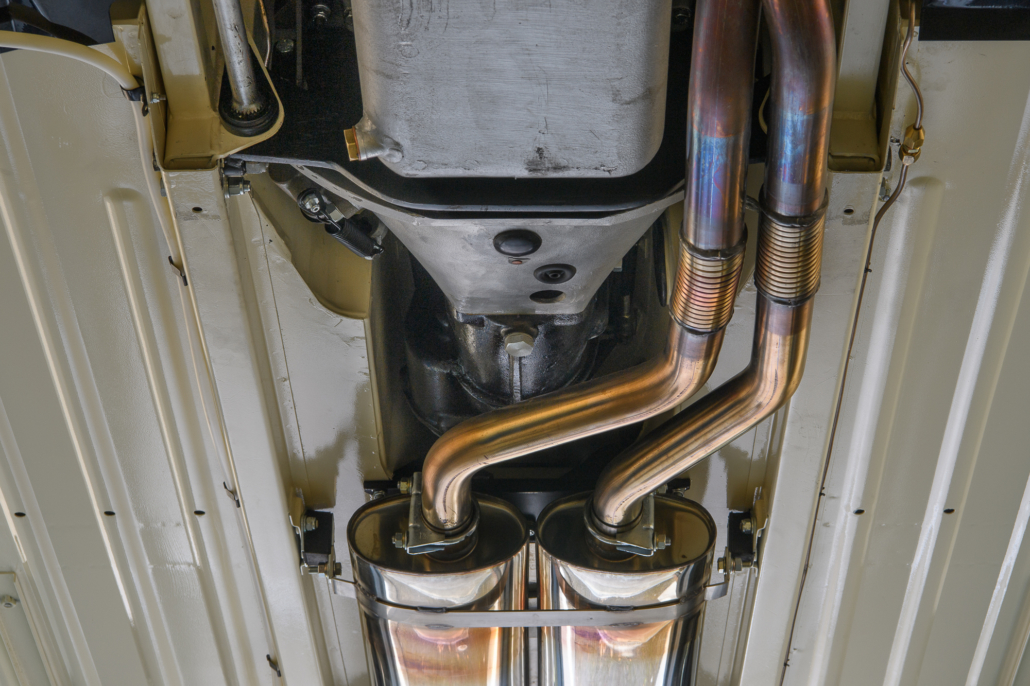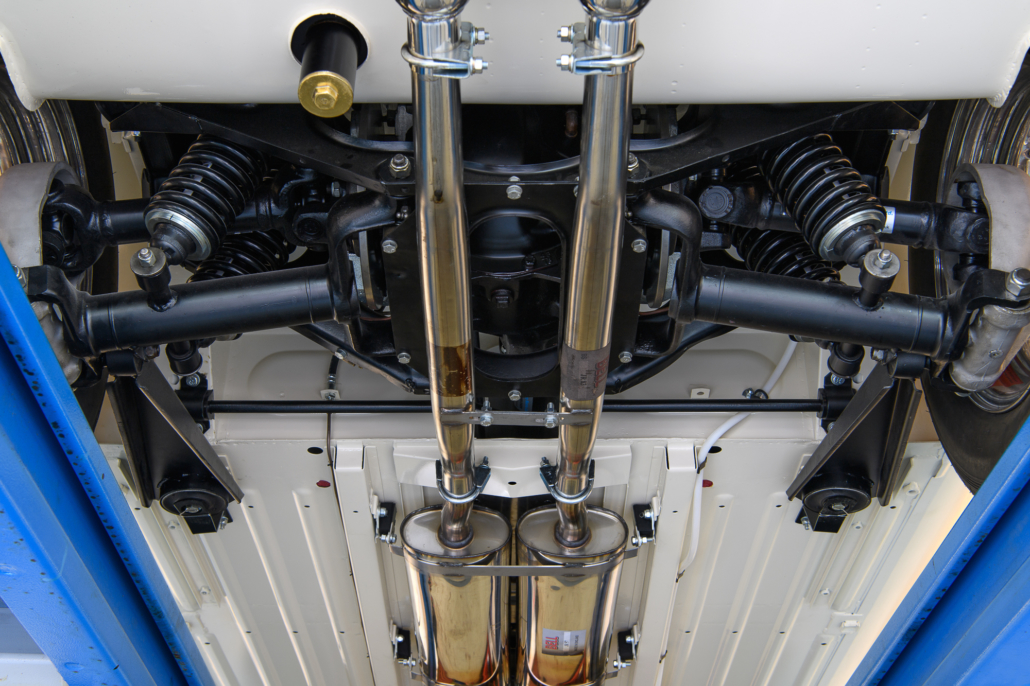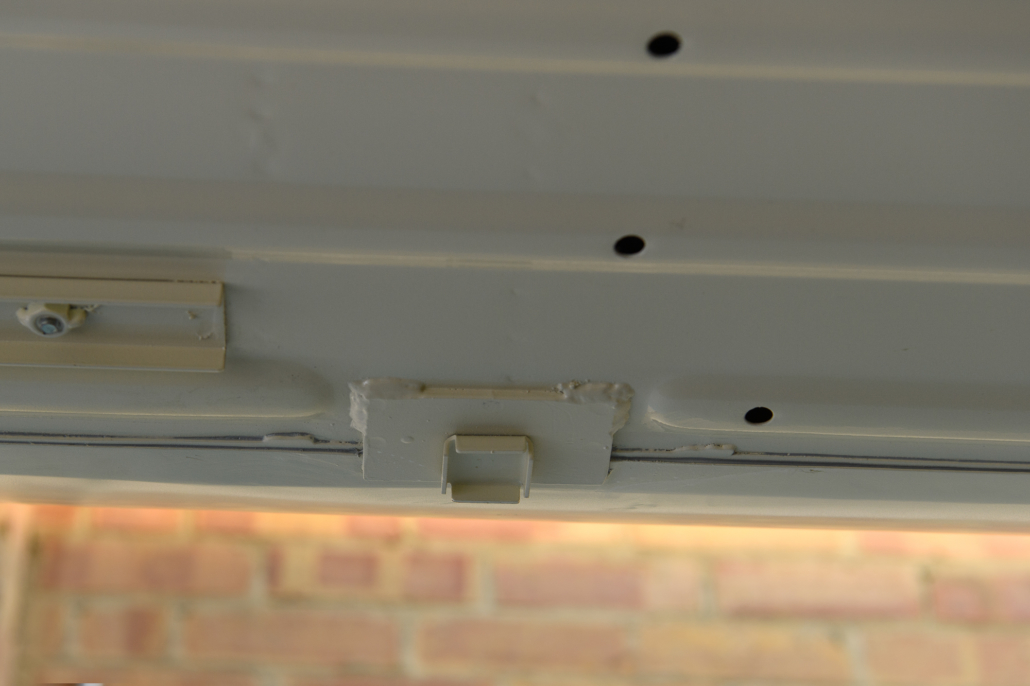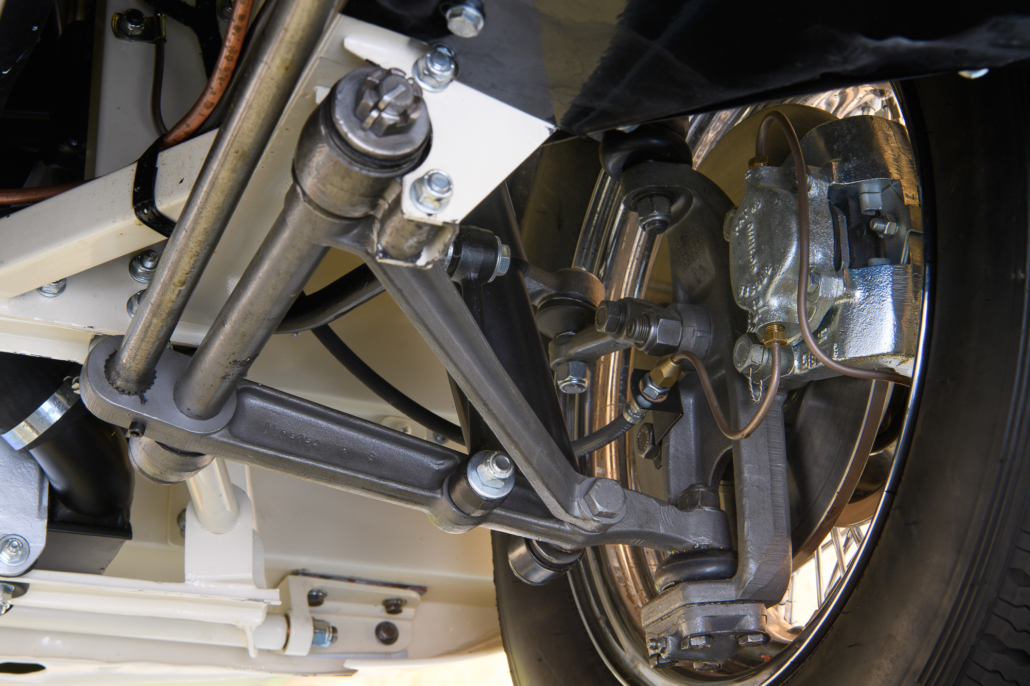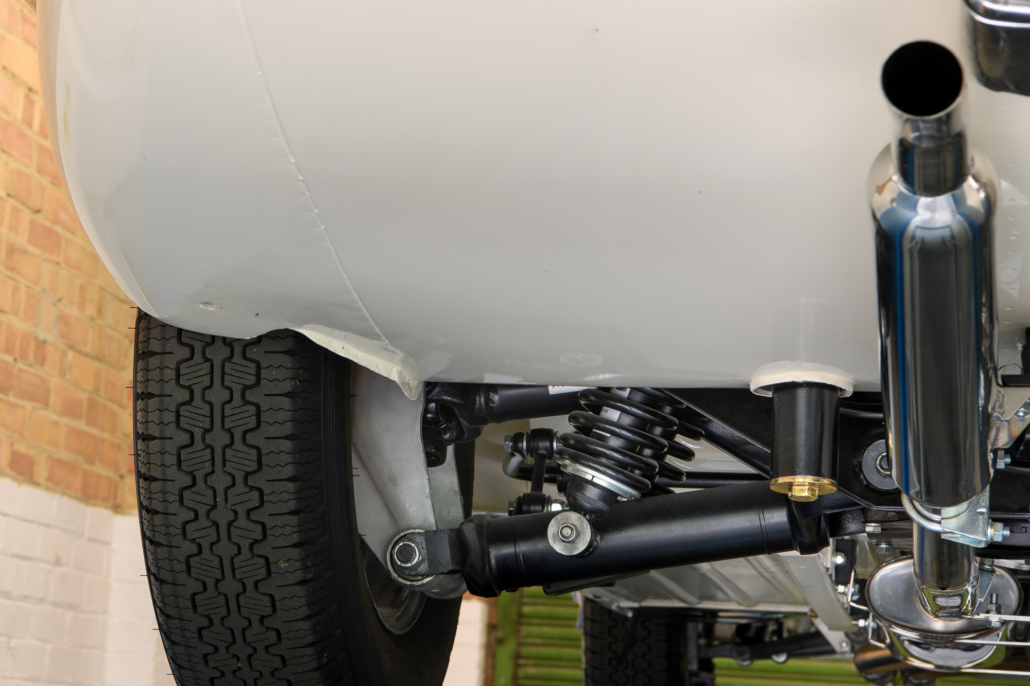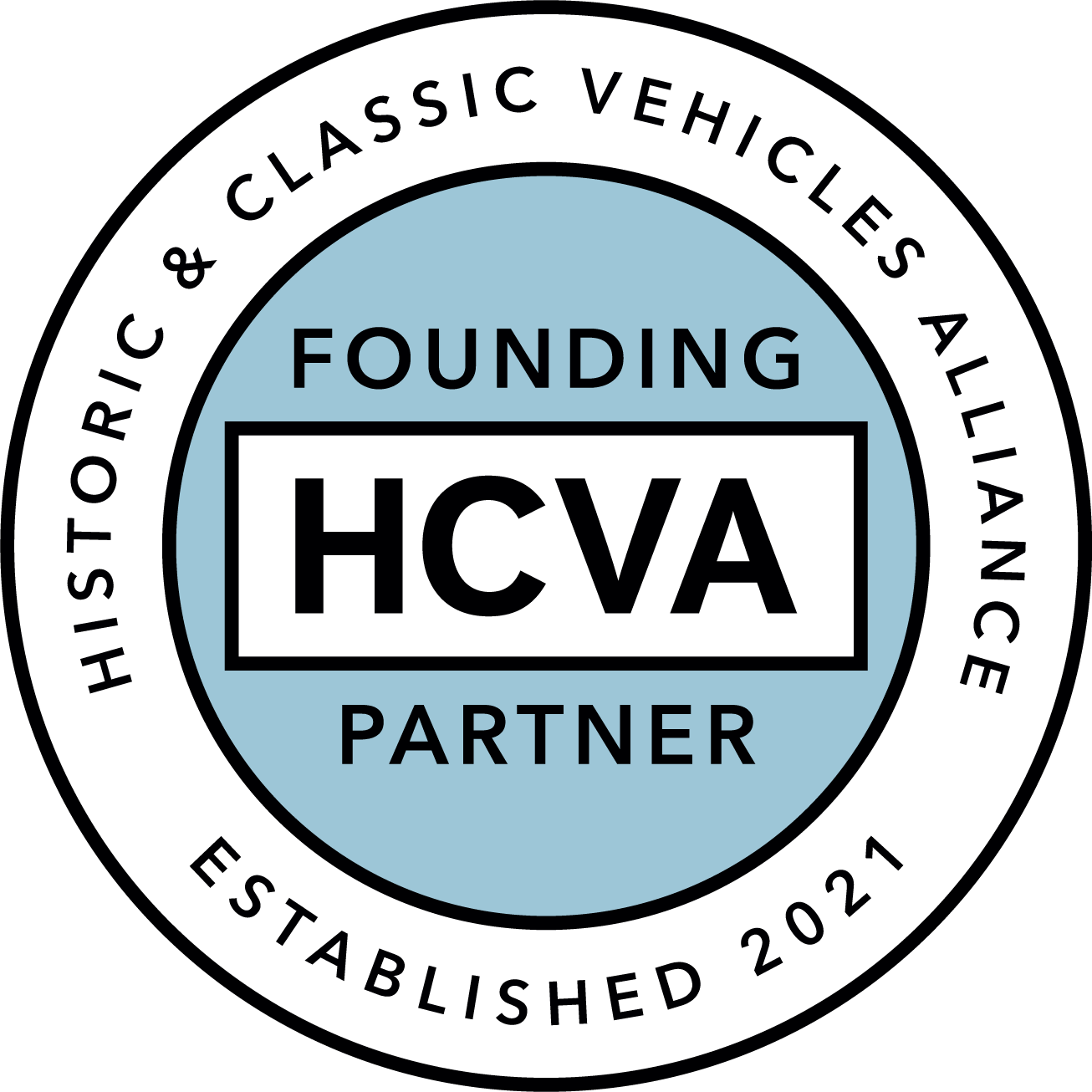The earliest E Type Jaguars can be identified by several distinctive features such as ‘welded louvres’ or flat floors’, the most unique and rare feature of all being the ‘outside bonnet lock’ (‘OBL’) used only on the first cars manufactured. Each of these three features were later abandoned, making the OBL a particularly notable and rare example of one of the most iconic sports cars in history.
As with most cars, it is the first iteration, embodying the initial design in its purest form that becomes collectible and highly sought after whether that be the earliest Porsche 2.7 RS, the Ferrari 250 SWB, or even the humble Mini. Such is the position now held by the ‘outside bonnet lock’ E Type Jaguars.
Chassis 875282 was Shipped to Jaguar Cars New York USA when new and sold to Mr John D Rogasnet, 875282 later found its home in New Jersey, by this time the car is alleged to have travelled 230,000 miles, clearly used as Sir William Lyons intended!
An article in the EJAG magazine of July 1980 by Dr Tom Haddock, the leading historian on early E Types and author of the book, ‘E Type Six Cylinder Originality Guide’, states that the car had been added to his register of early cars.
The car was moth-balled and forgotten before being discovered in 2016 and imported to the UK. Although needing full restoration from its years of neglect, the car was remarkably well preserved retaining the all-important features and idiocrasies seen only on the earliest E-types produced. Given this, a lengthy and detailed restoration was undertaken, ensuring the car was authentically restored – preserving as much of the original car as possible.
Whilst some E Types from 1961 purport to have survived fifty-seven years, very few do so with their original mechanical components and body panels, given that the restoration industry now produces everything sufficient to create a completely new car from a simple chassis number. Thus, most restored E Types are a composite of original and new parts, with most finished to non-factory standards and with non-original specification. Since replacing body panels such as wings, door skins, or bonnet during restoration is often less expensive and faster than restoring the original items, the originality of an OBL’s surviving body panels is the primary determinant of its value provided that the car is ‘matching numbers’.
875282 is such an example that does indeed retain its original engine and body panels,
all of which were carefully restored and preserved during the restoration. Due to its uniqueness, 875282’s restoration was different, with six specific goals governing the restoration process:
- To retain all the features original to the cars’ manufacture in 1961 and the ‘outside bonnet lock’ model in particular.
- To restore the car with original Jaguar Factory finishes and avoid over-restoration. For example, many of the original factory chrome components were retained.
- To utilise improved components only if consistent with current traffic conditions, such as a larger radiator still to the original ‘finned’ design.
- To avoid mechanical updates such as adjustable shock absorbers, larger brake calipers, all synchromesh gearbox, etcetera.
- Retain as much of the cars existing patina as possible and not to lose its ‘identity’ in the process.
- Wherever possible, to restore components and to avoid the use of replacement kits.
Once the body panels and tub had been carefully media blasted to bare metal, the car was assessed and in the interest of the its long-term structural integrity and safety, a replacement floor pan and engine frame was sourced from Martin Robey (The original components have been retained).
Many early E Types lose their original bonnet hinge frame or ‘picture frame’ bearing the all-important Chassis Number, often as a result of accident or corrosion due to water ingress combined with the heat of the engine, however 875282 still retains these original components.
The Overall restoration was entrusted to the meticulous operation of Neil Howe Racing, with the engine restored by Guy Broad, both are leading engineers in Jaguar engine preparation. When stripped, the engine despite its reported high mileage was found to be remarkably original, much like the rest of the car. It was then painstakingly rebuilt to original Factory specifications.
Similarly, the interior was entrusted to Aldridge Trimming, one of the finest Jaguar upholstery specialists who fabricated the interior right down to the smallest unique details such as the leather pouch on the centre console to hold the ‘T’ key as per factory specifications.
Naturally the car is presented with an incredible, detailed, history documenting its restoration with 5 folders of paperwork and photographs along with an original Factory Workshop Manual and copy of Dr Thomas F. Haddocks Jaguar E-Type Six Cylinder Originality guide (the bible for any early E-type aficionado). Present also with the car is its’ tool kit still in the original roll and the all-important ‘Shelley jack’ that is unique to the early cars.
875282 represents the opportunity to purchase one of the most collectable E-types in correct factory specifications. Not over-restored, the car would be equally at home on a concours lawn or a country road.

